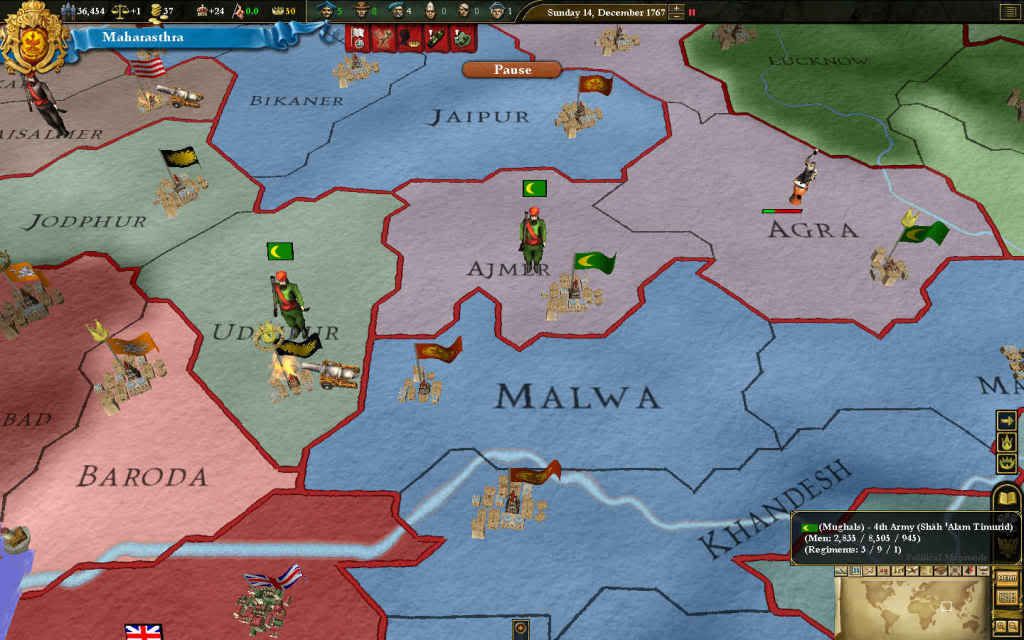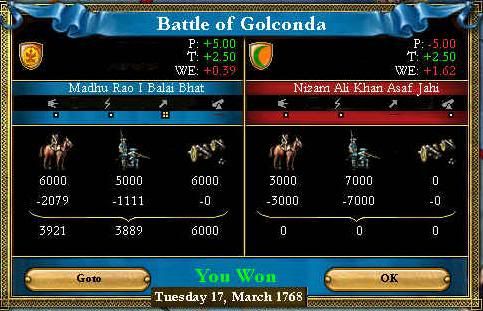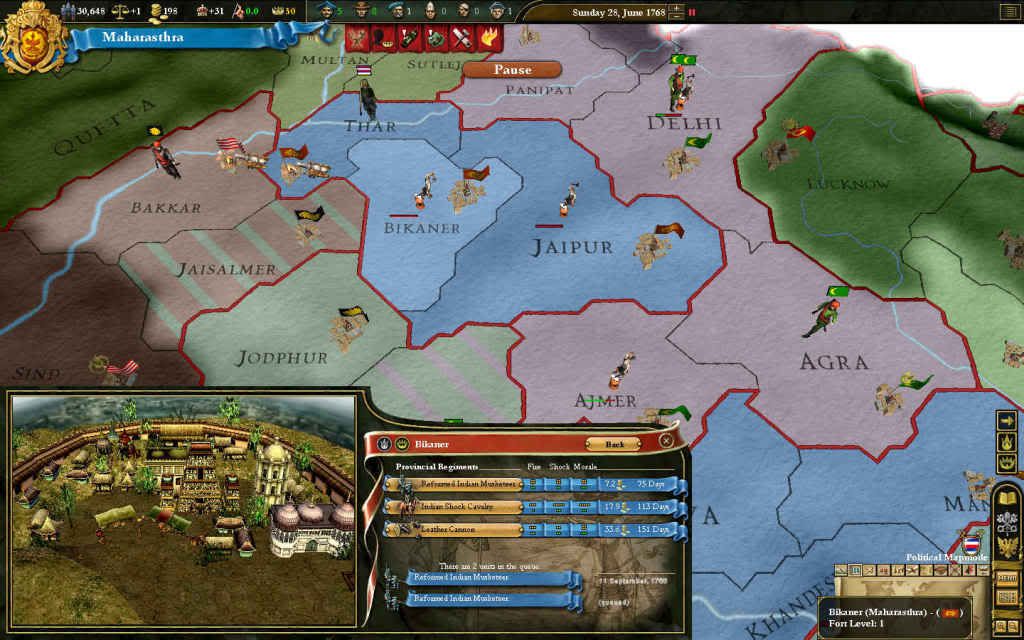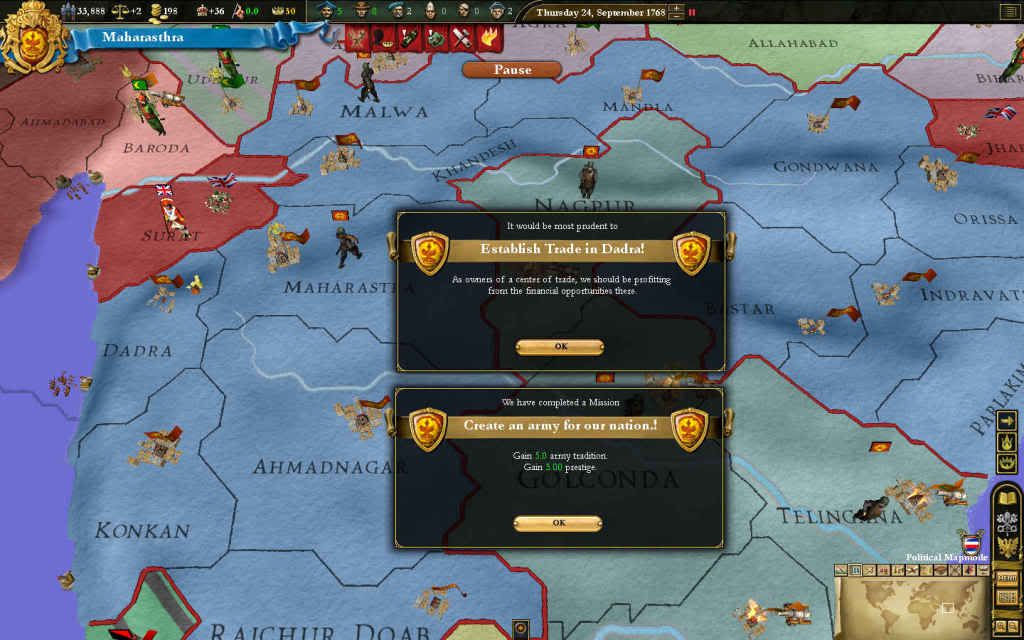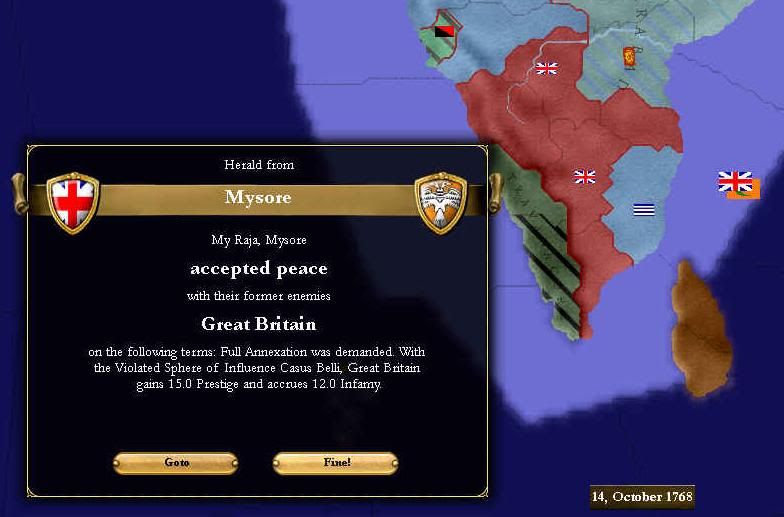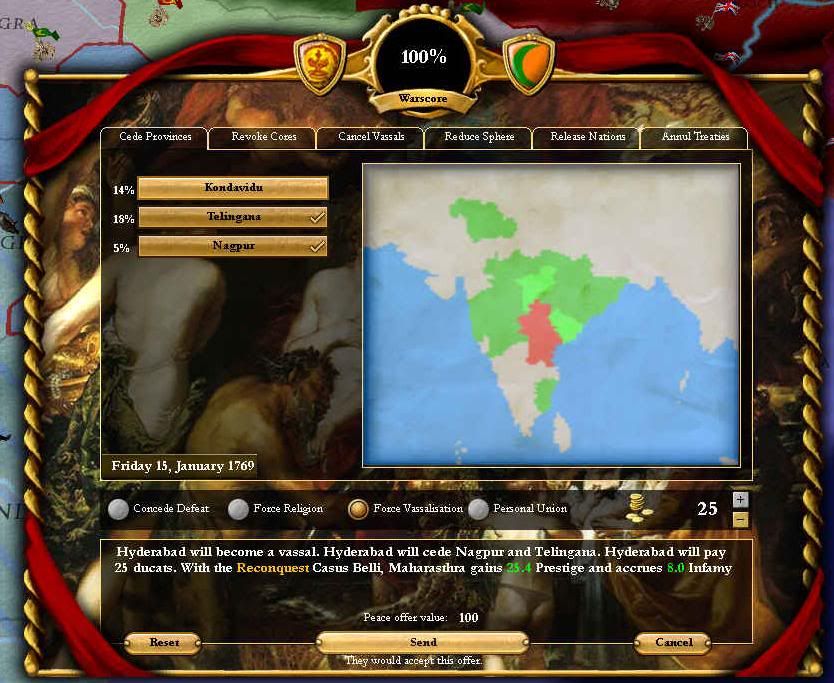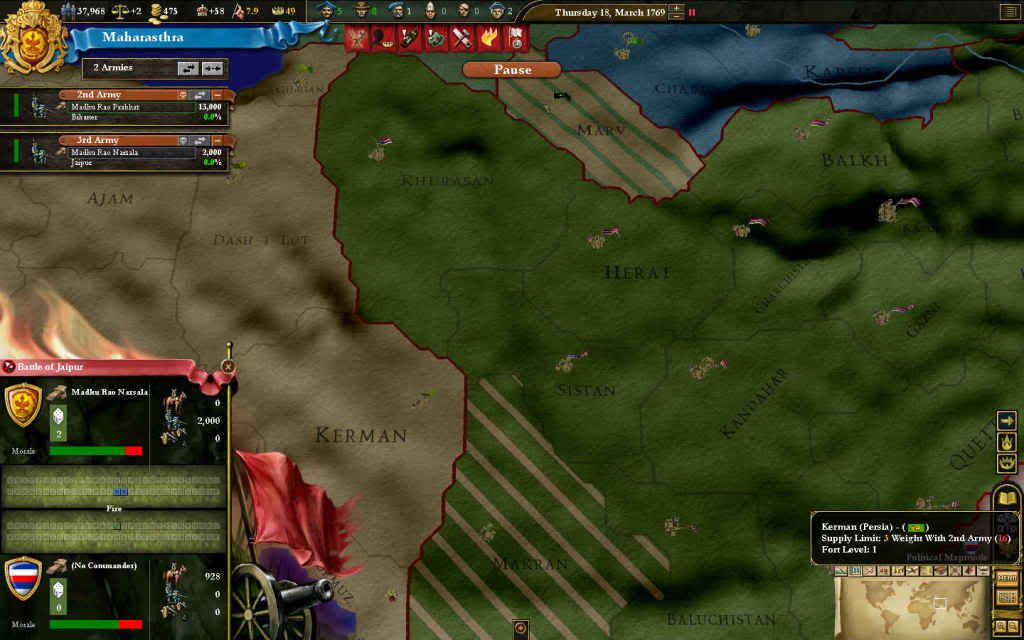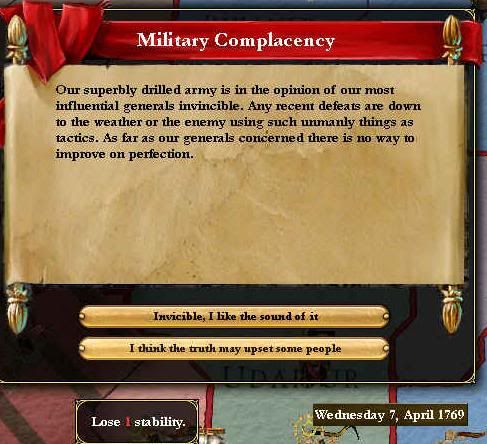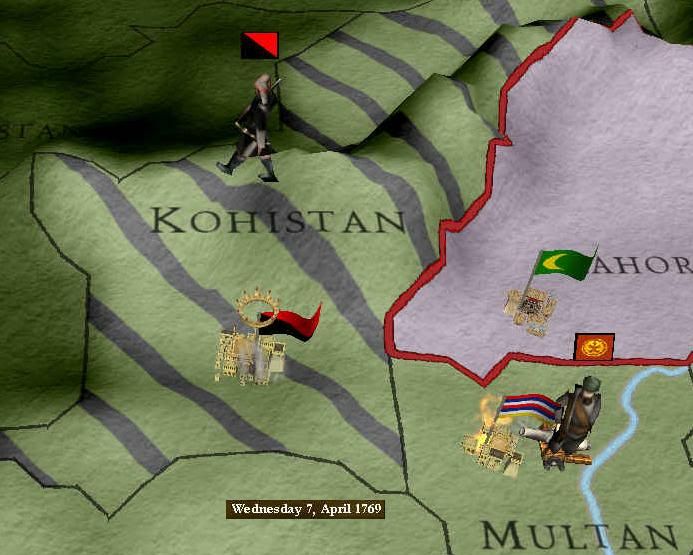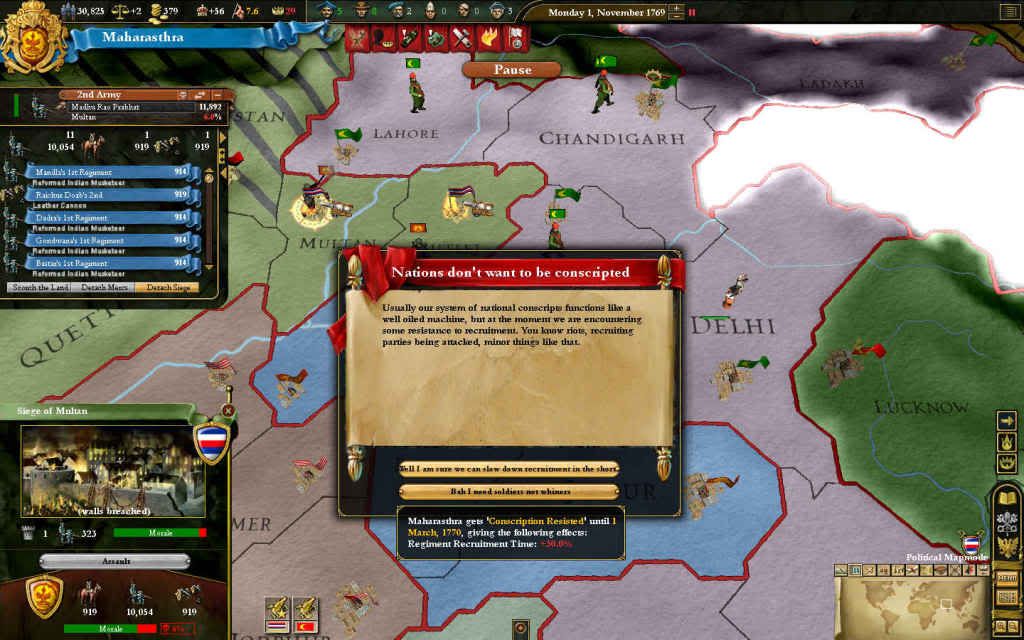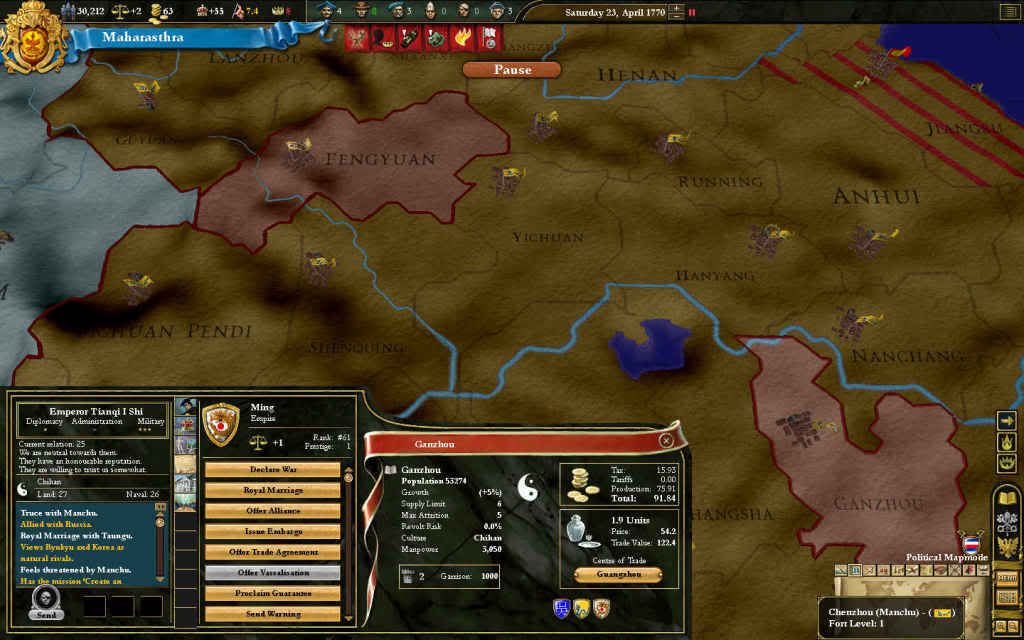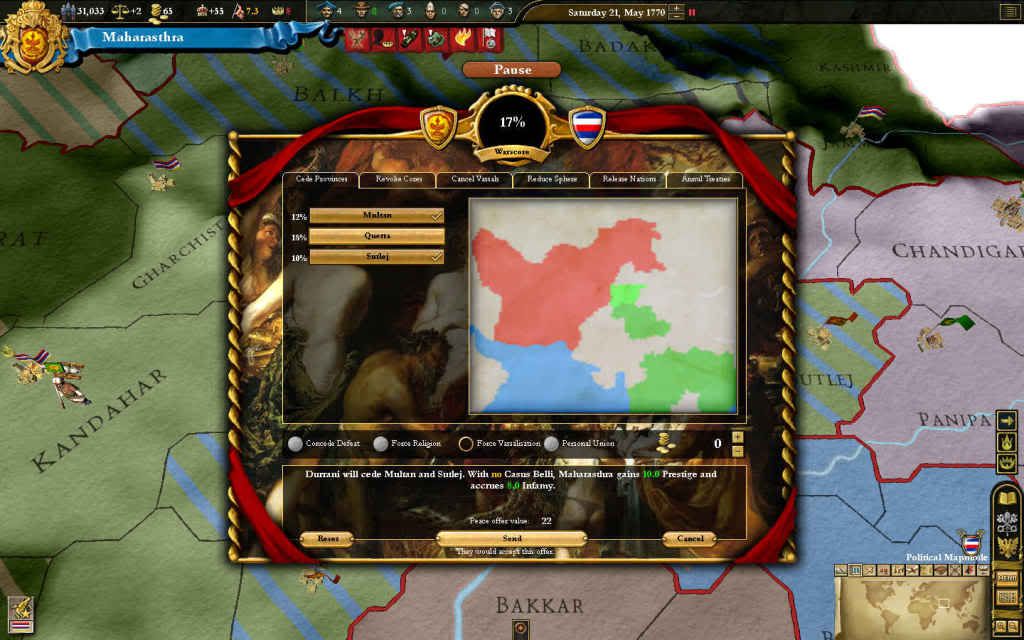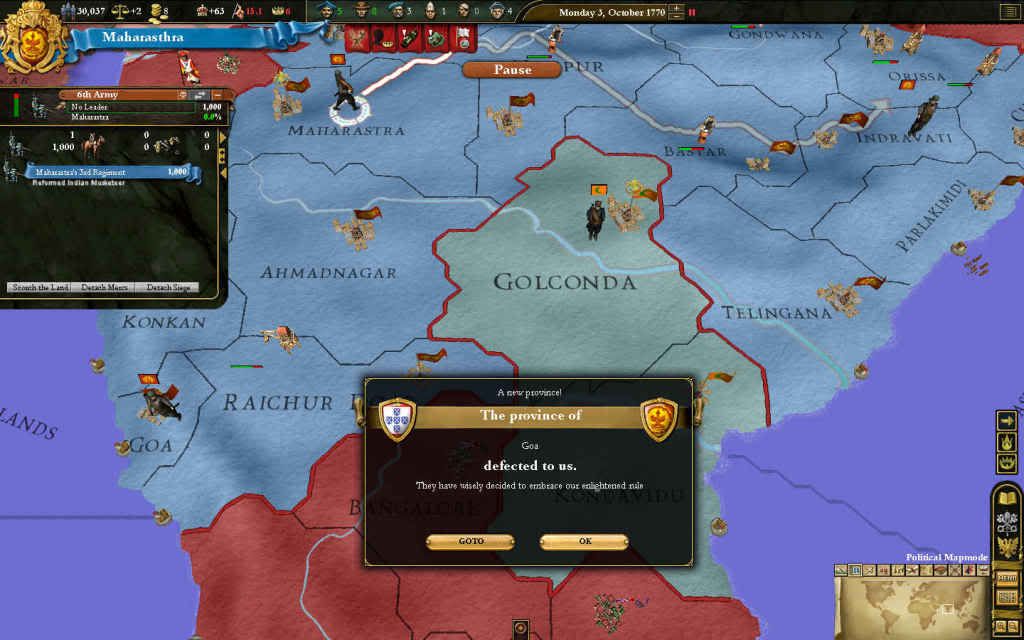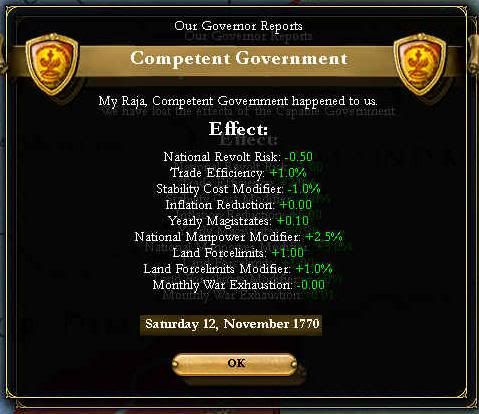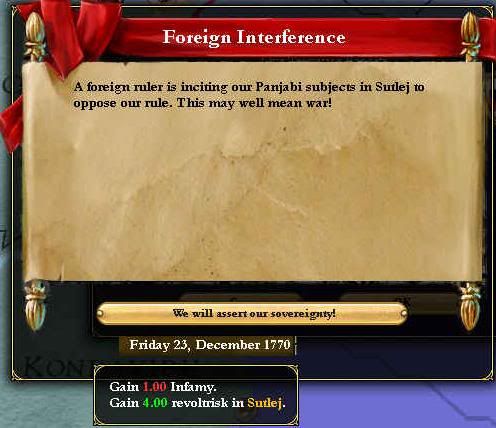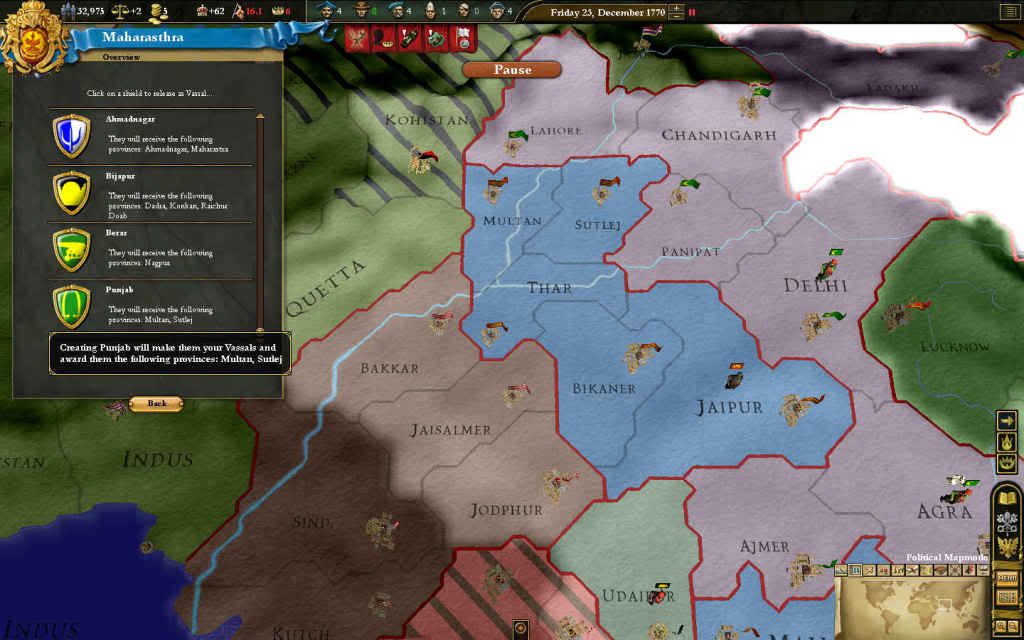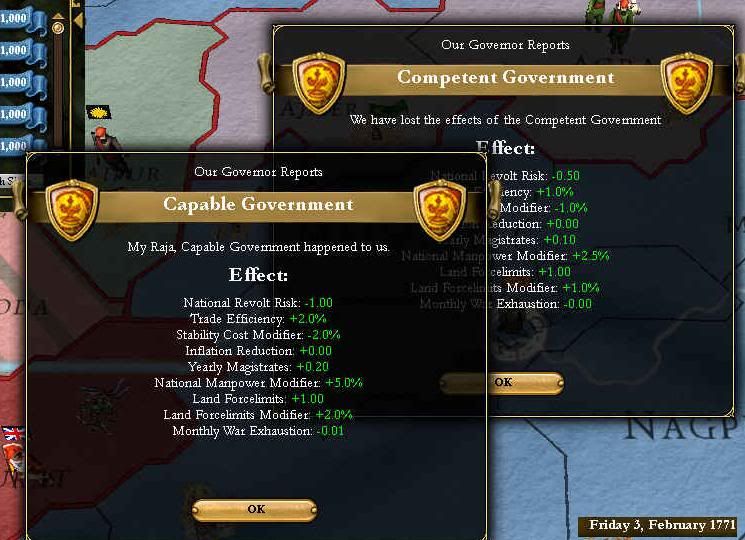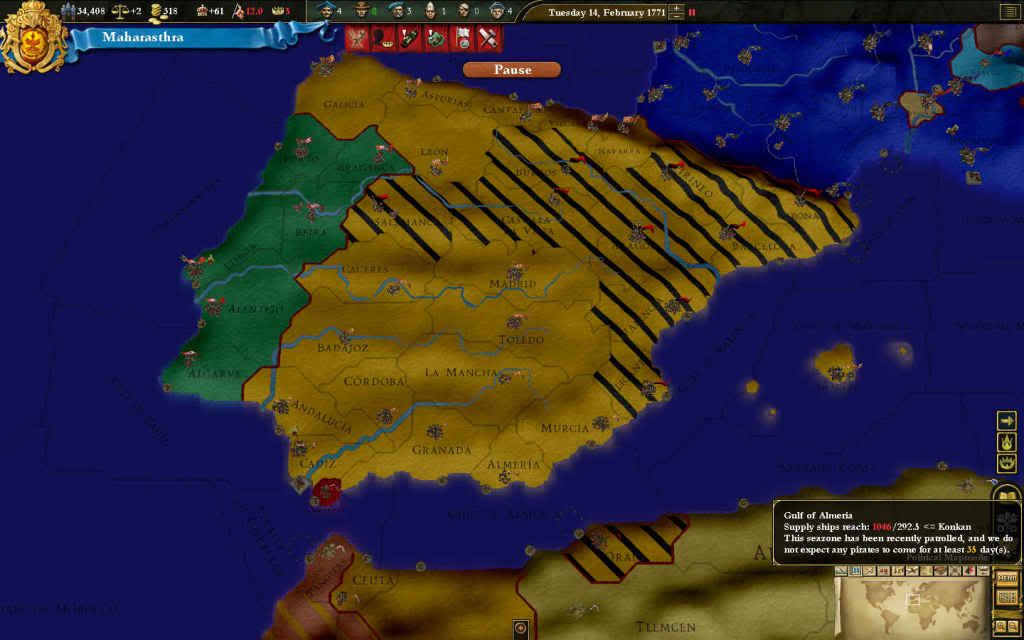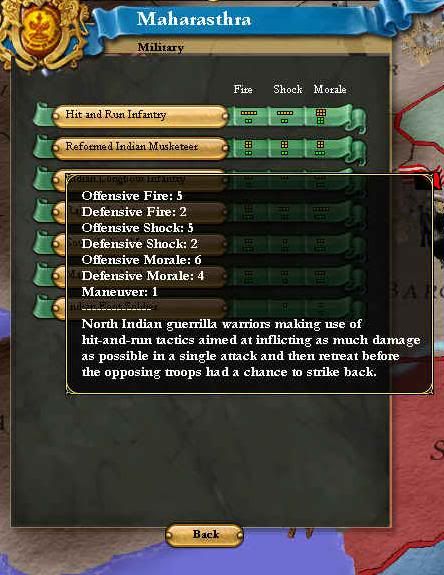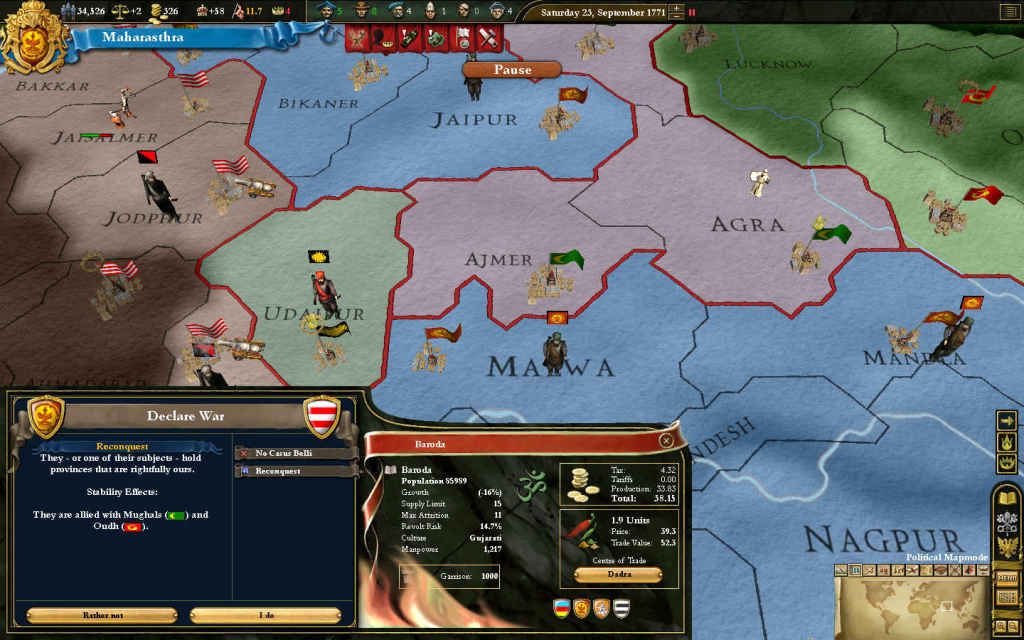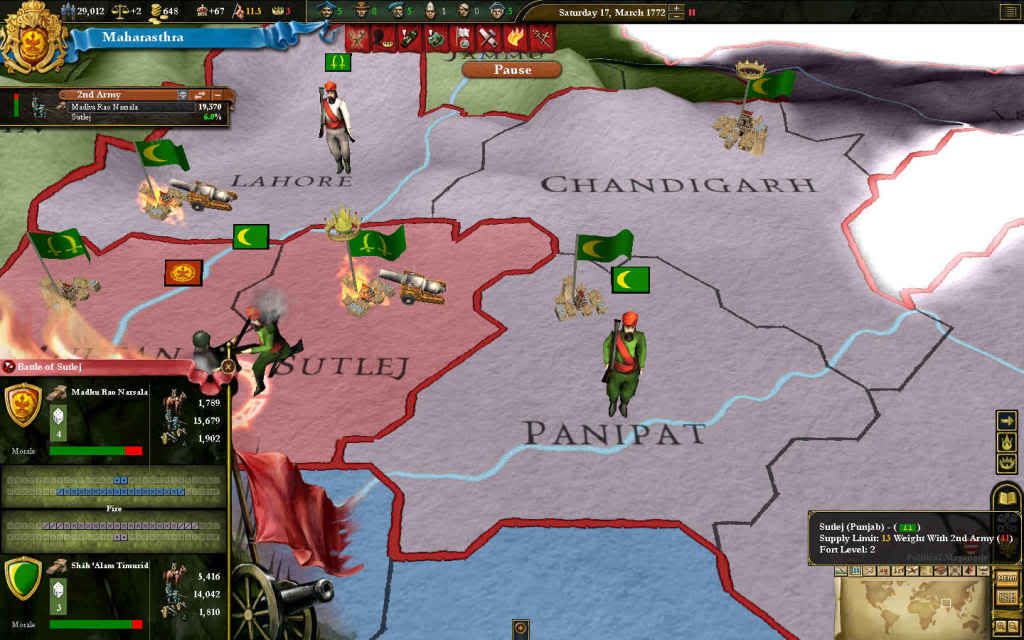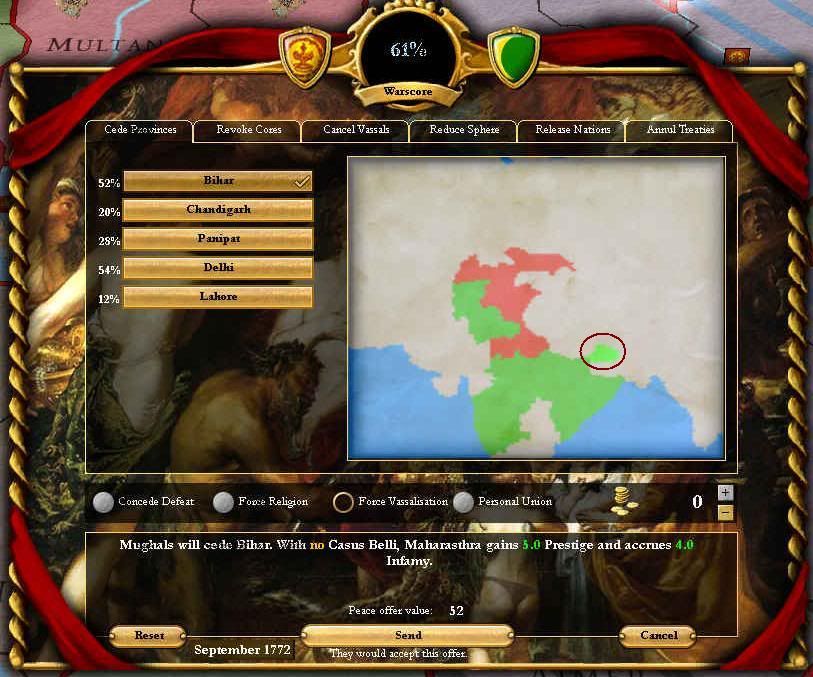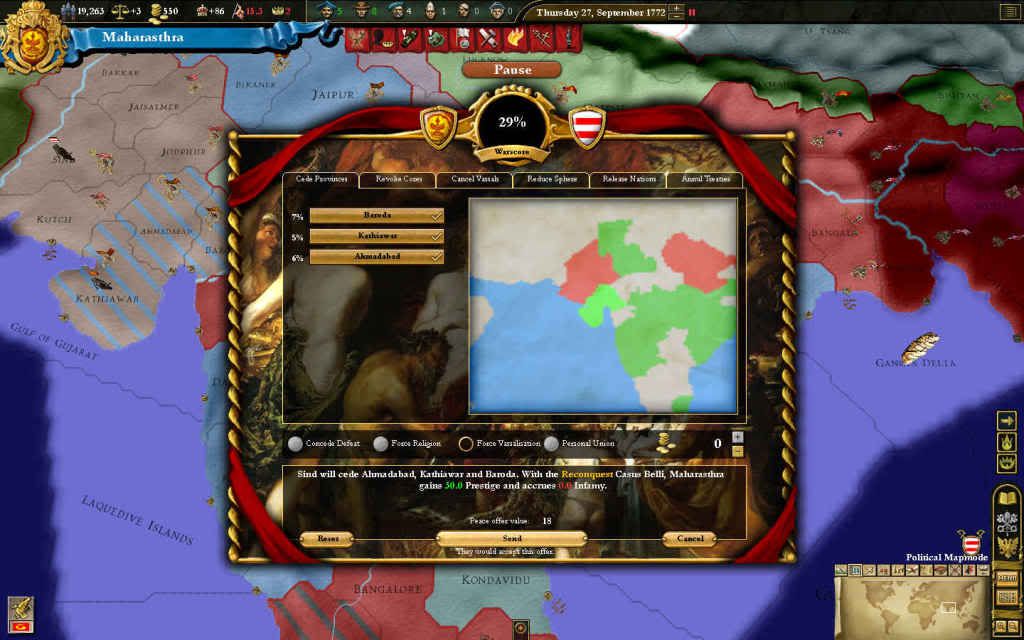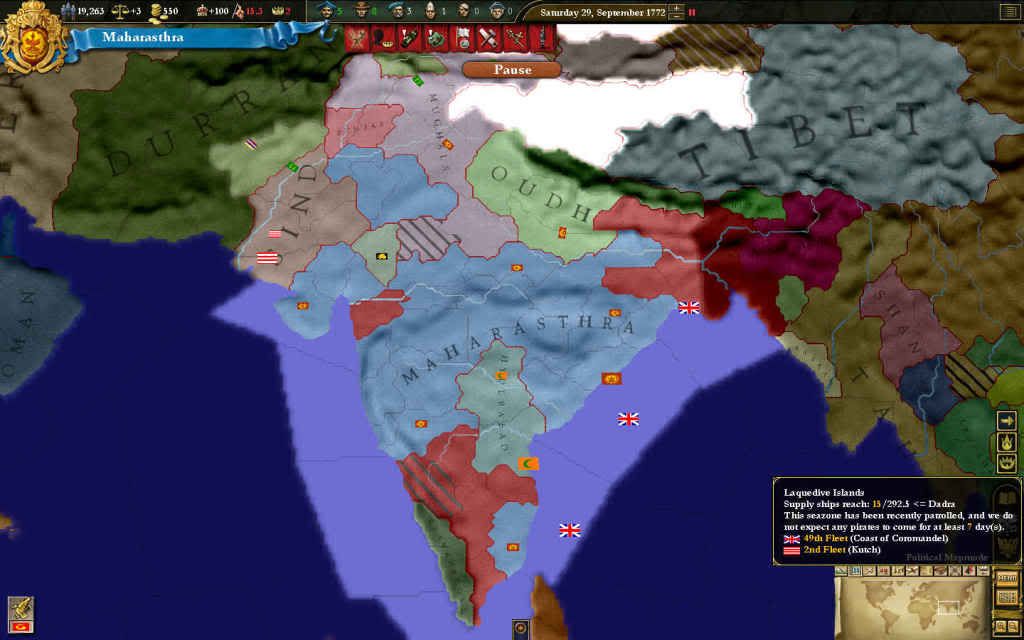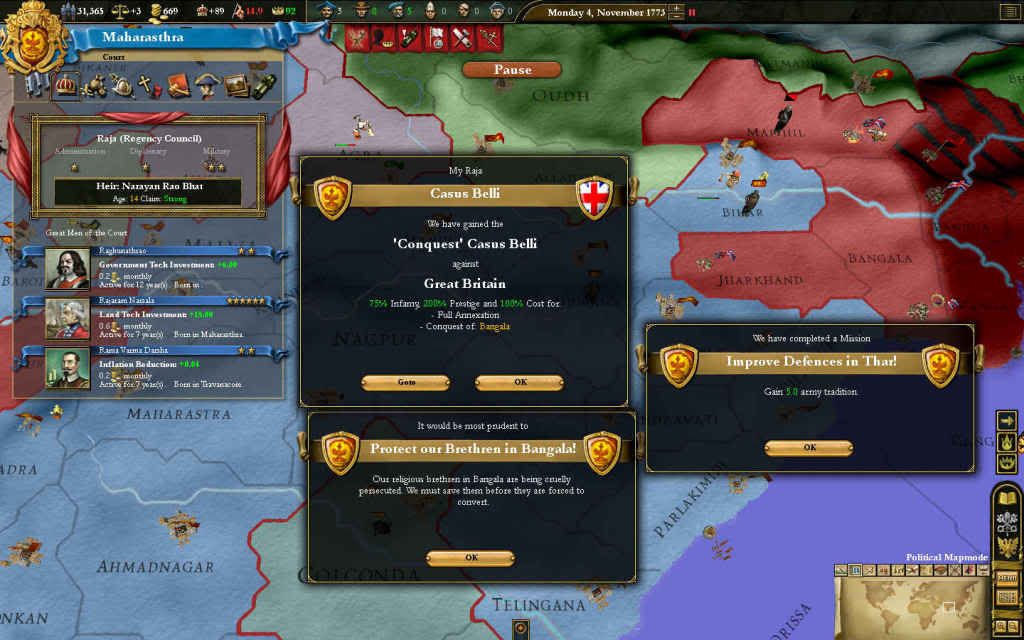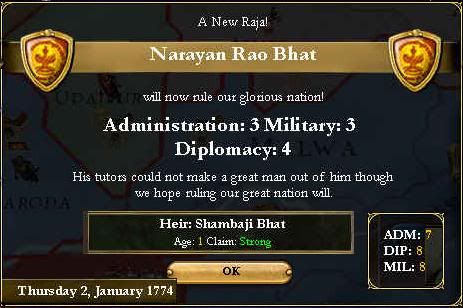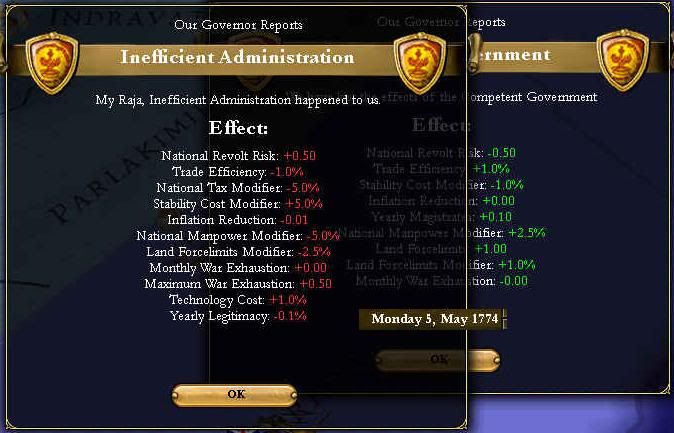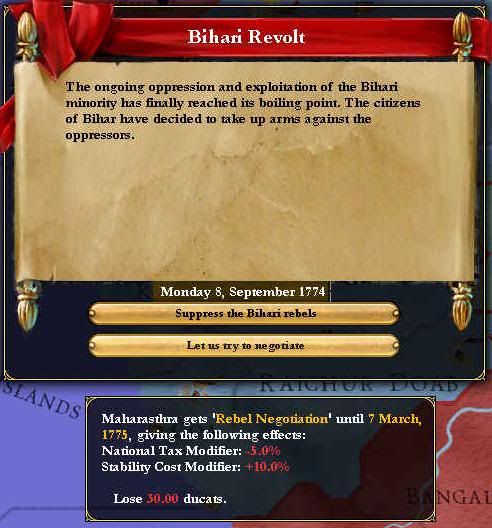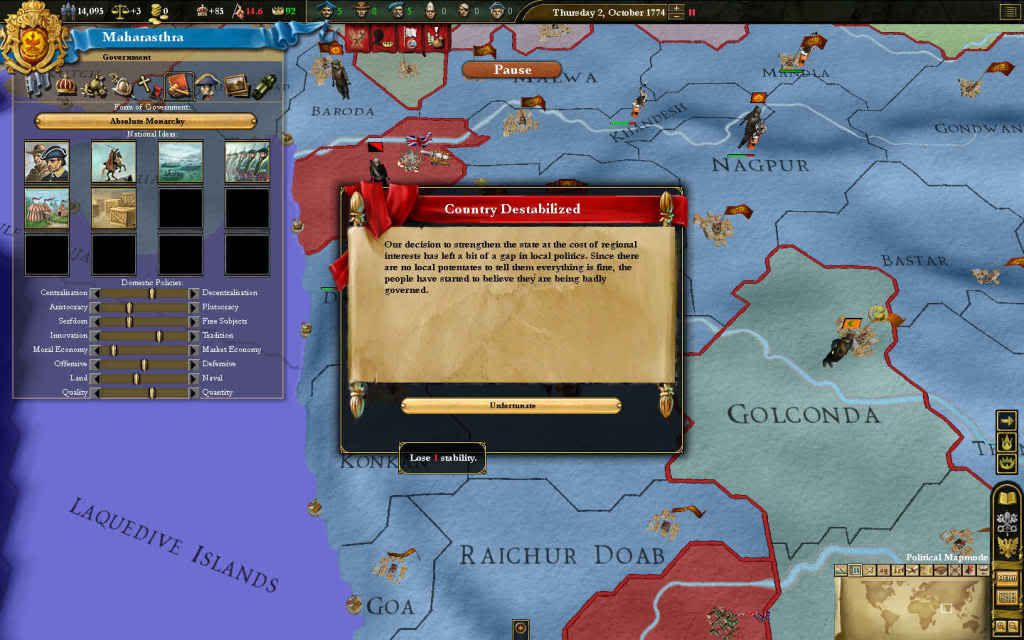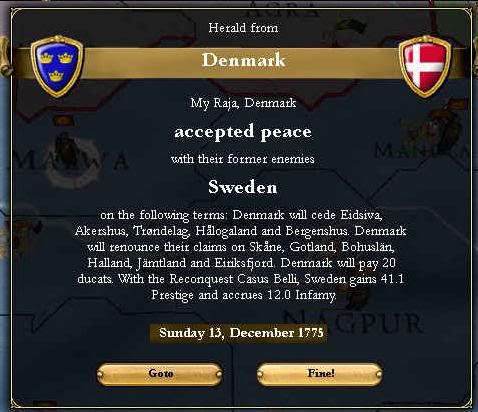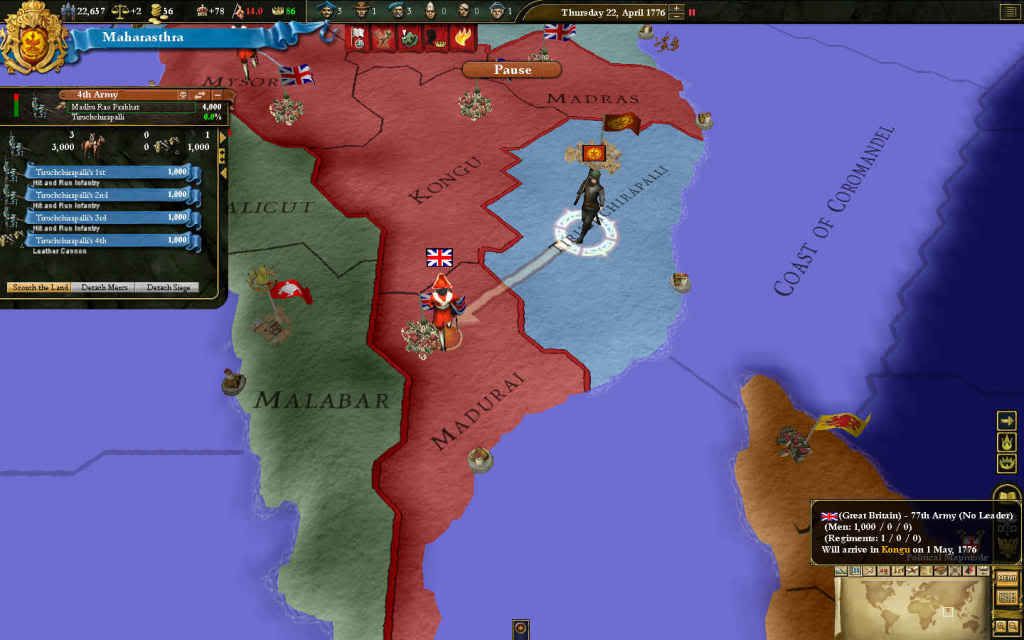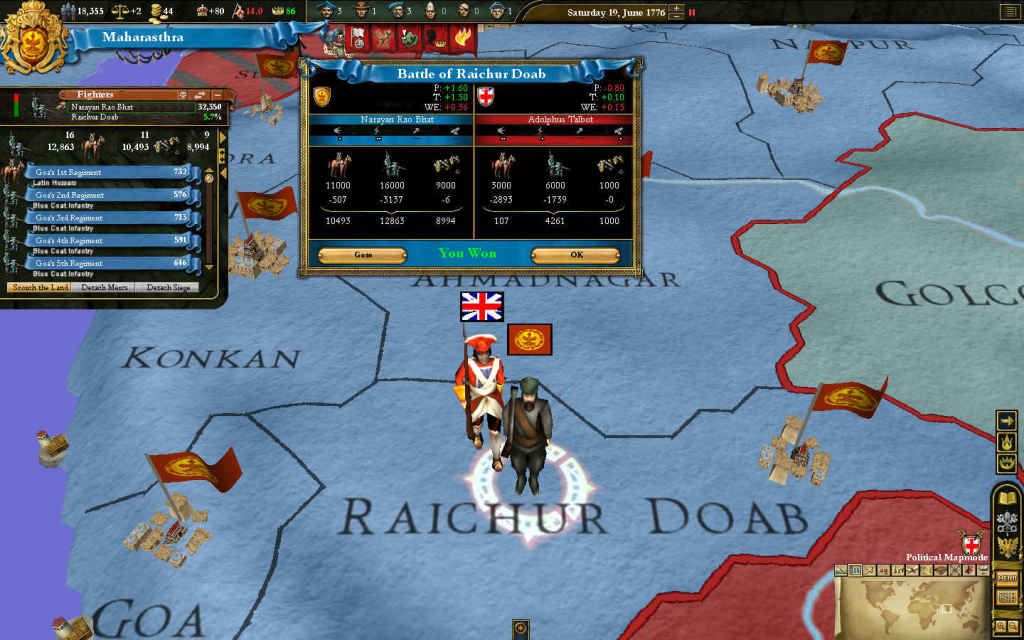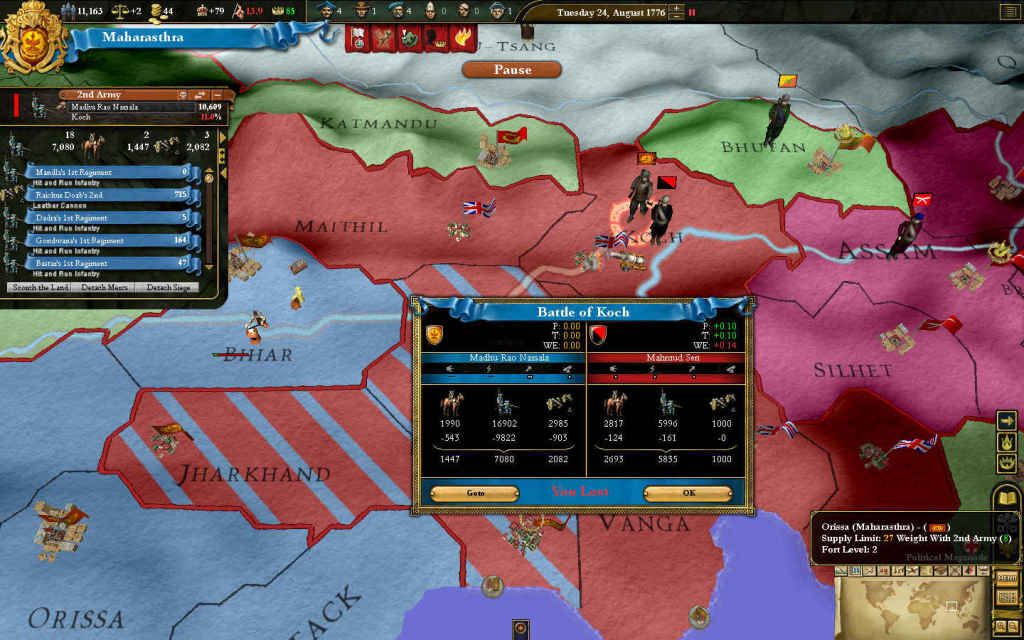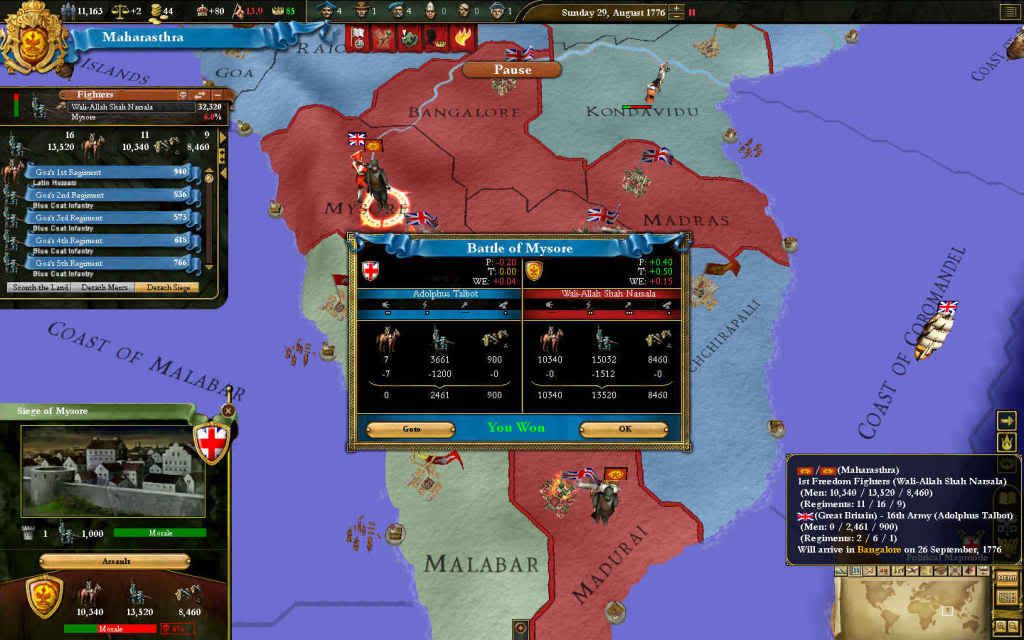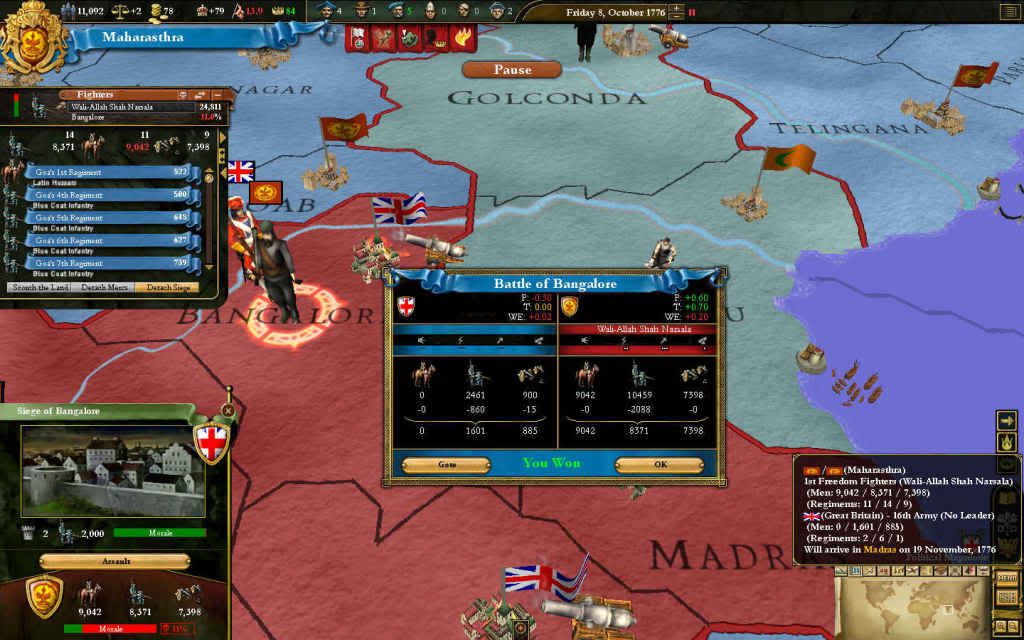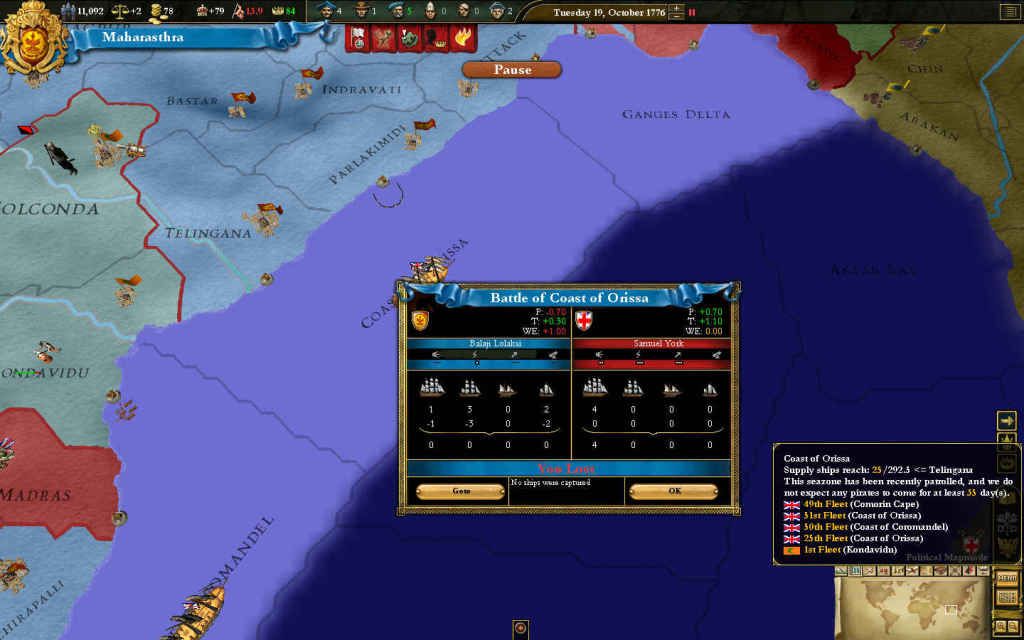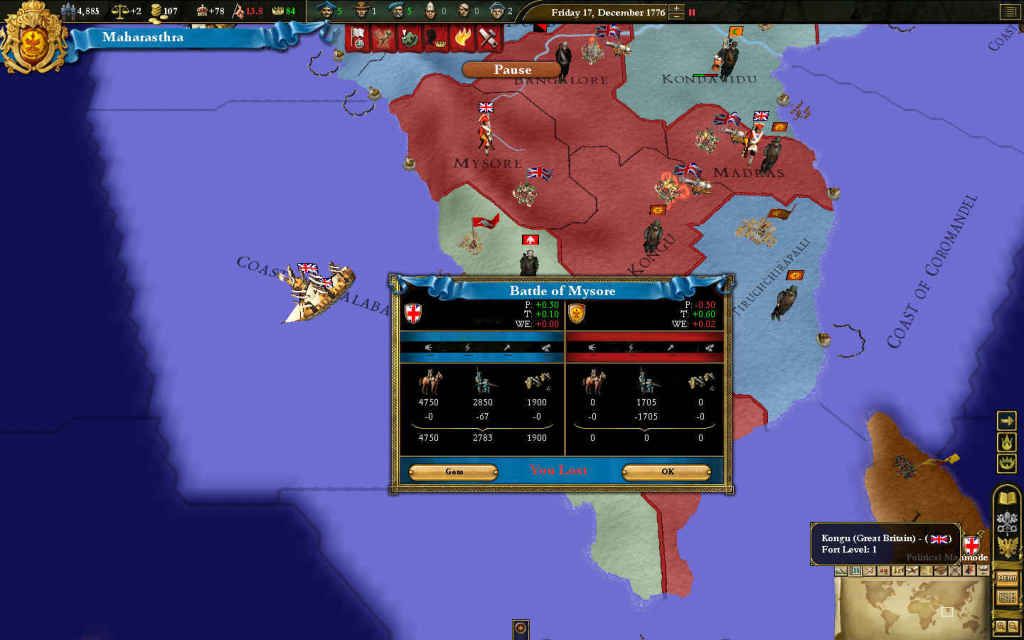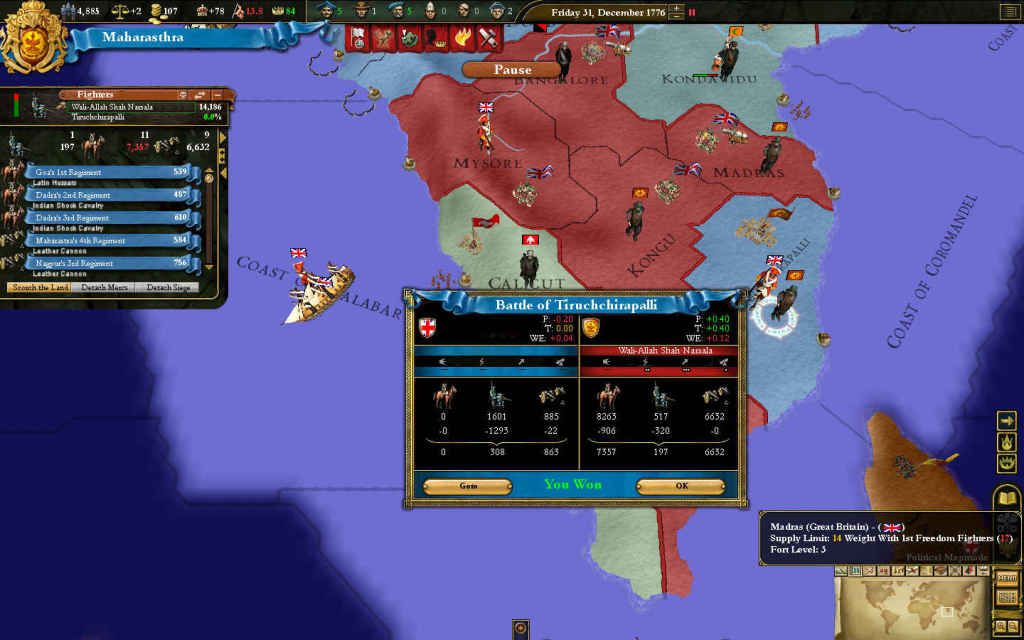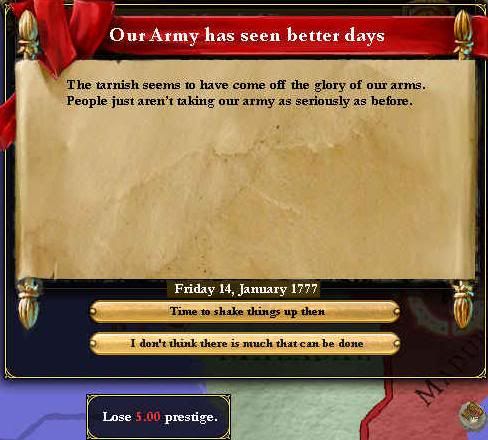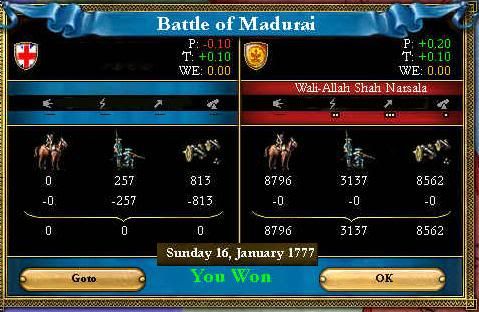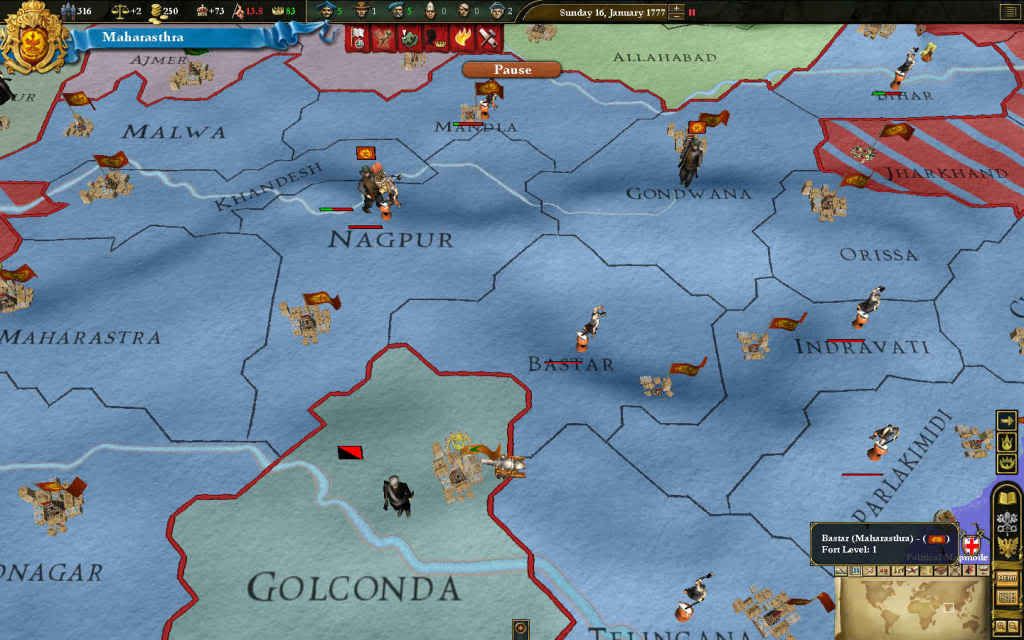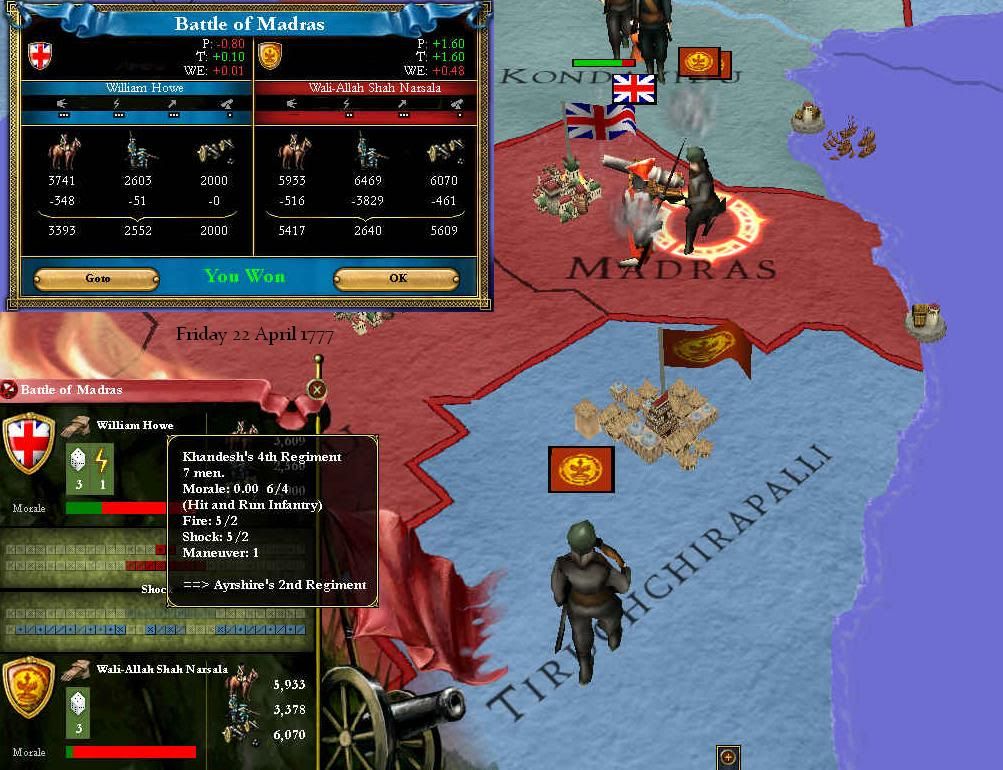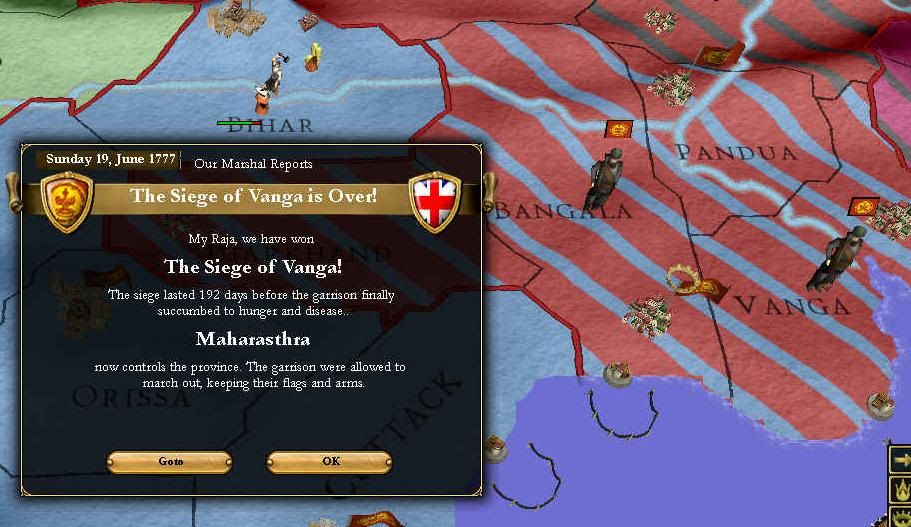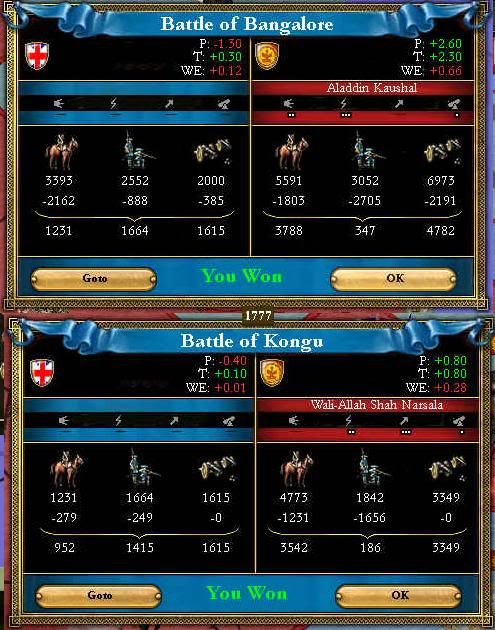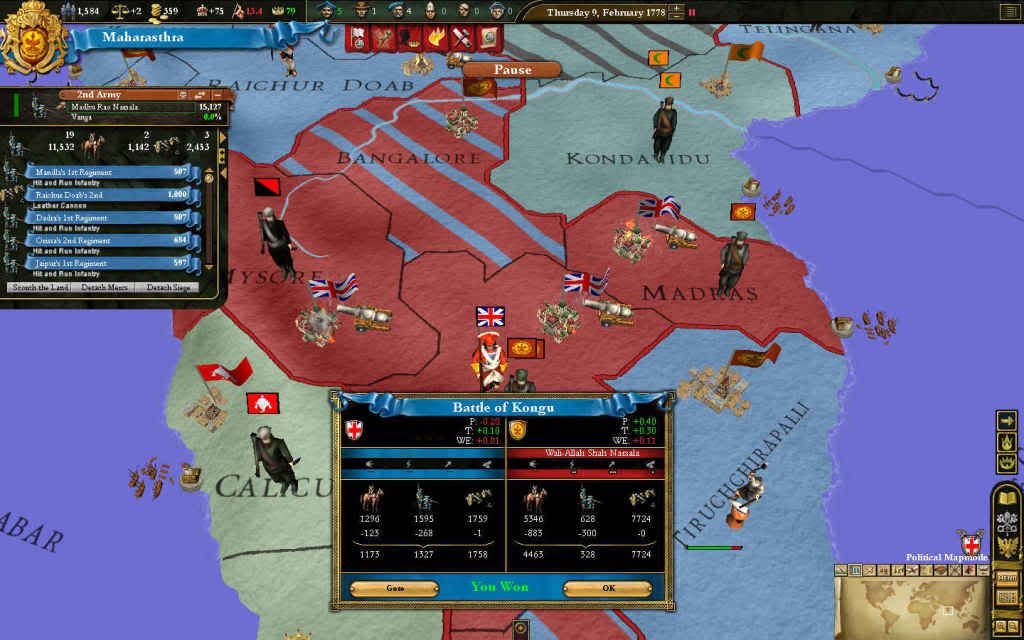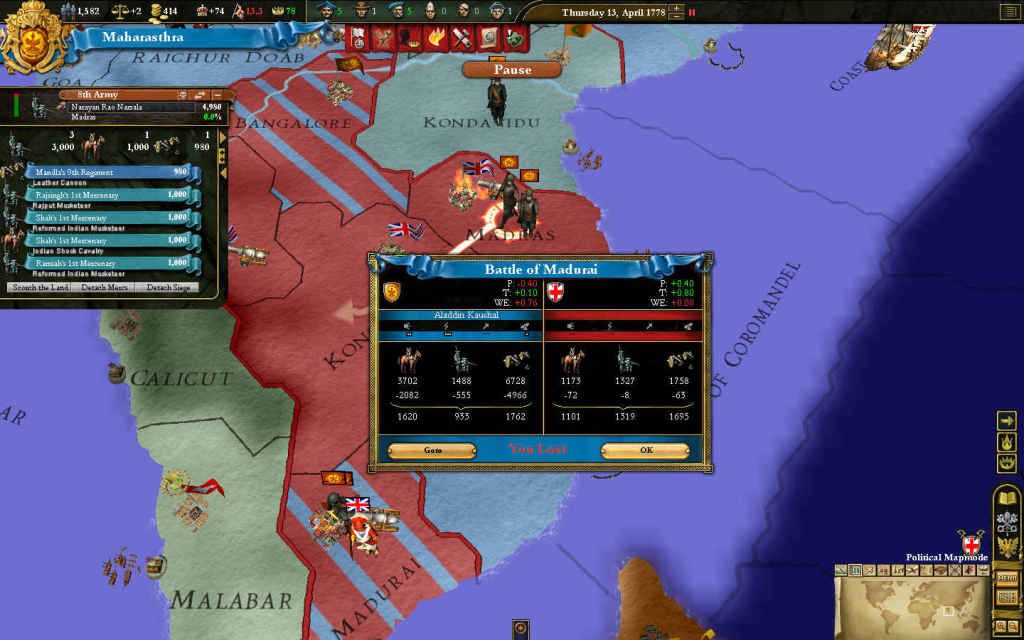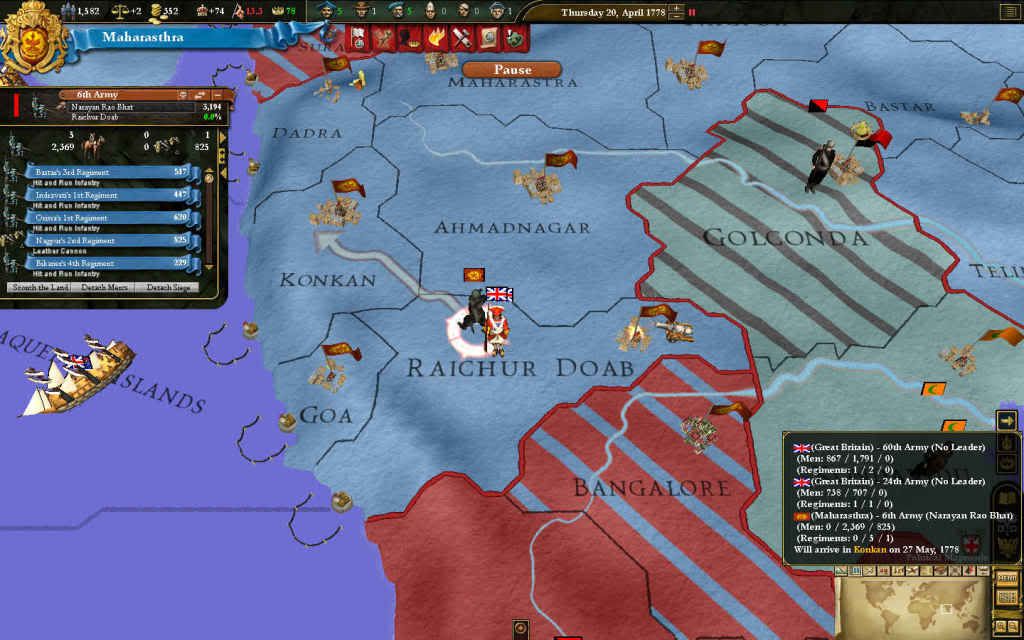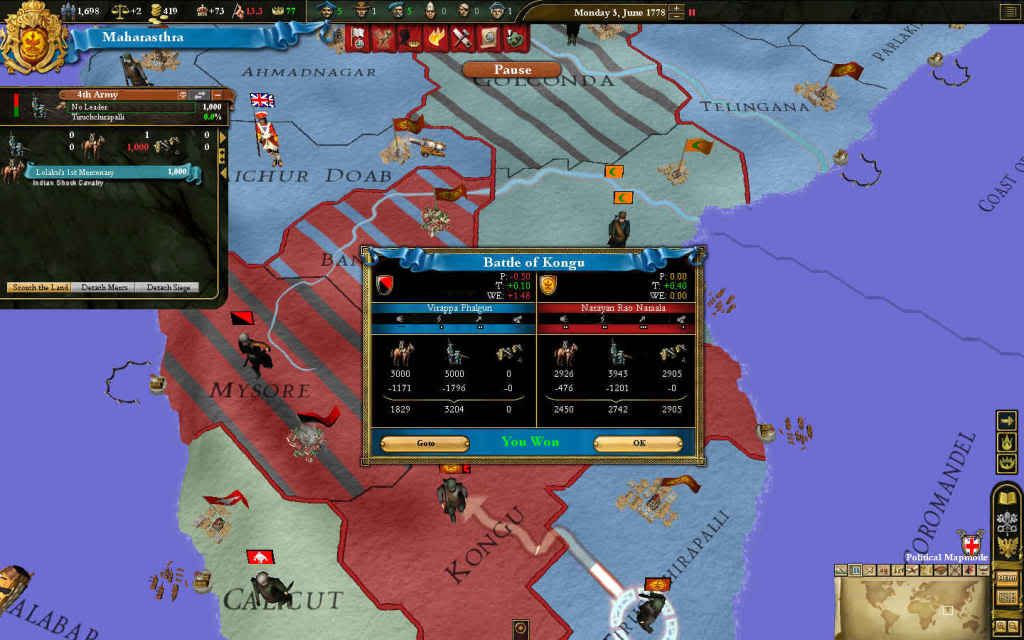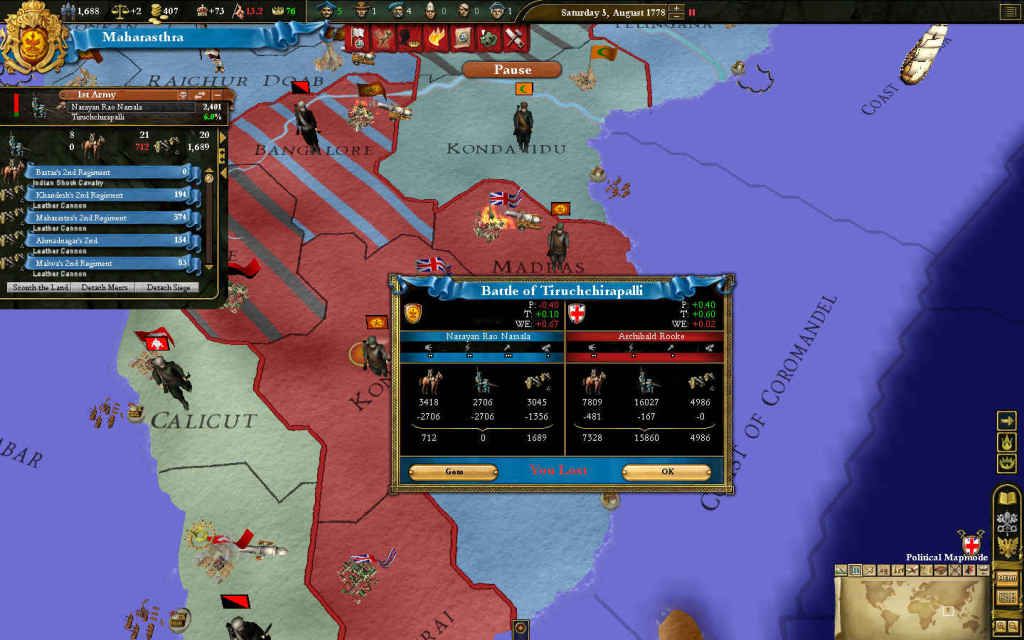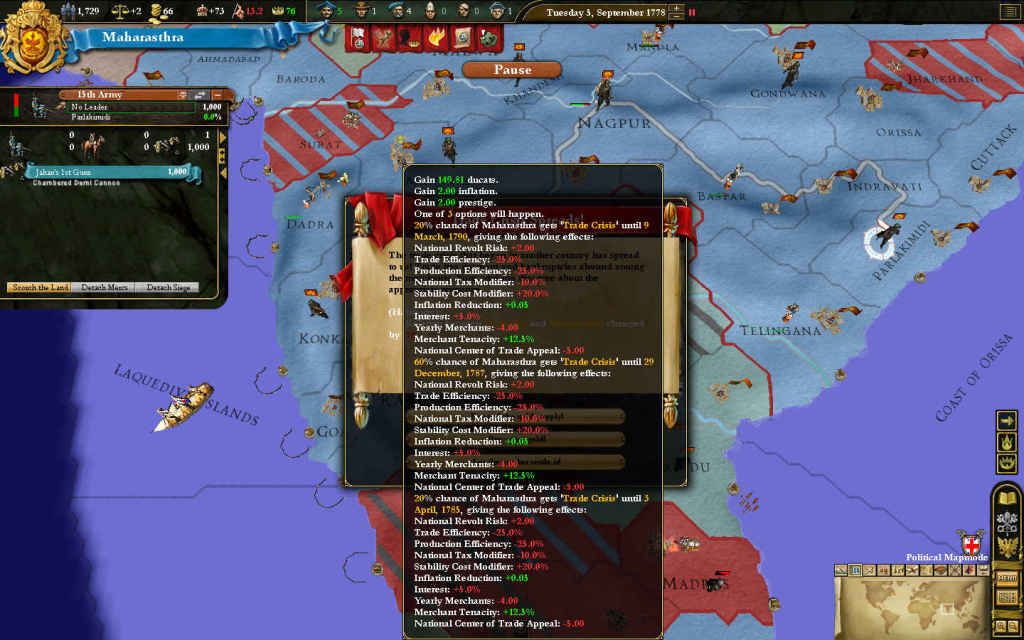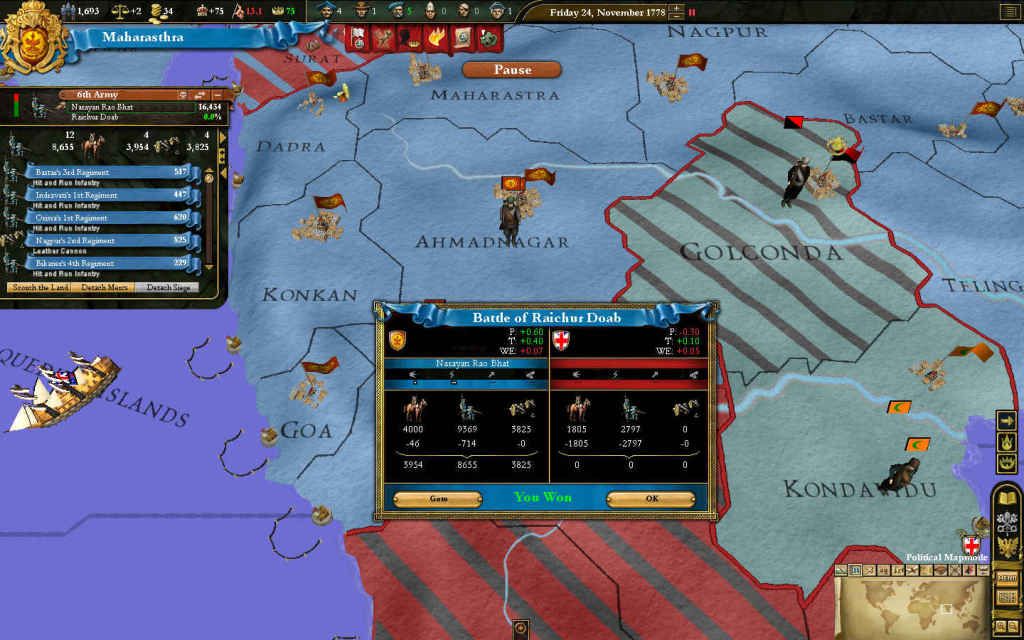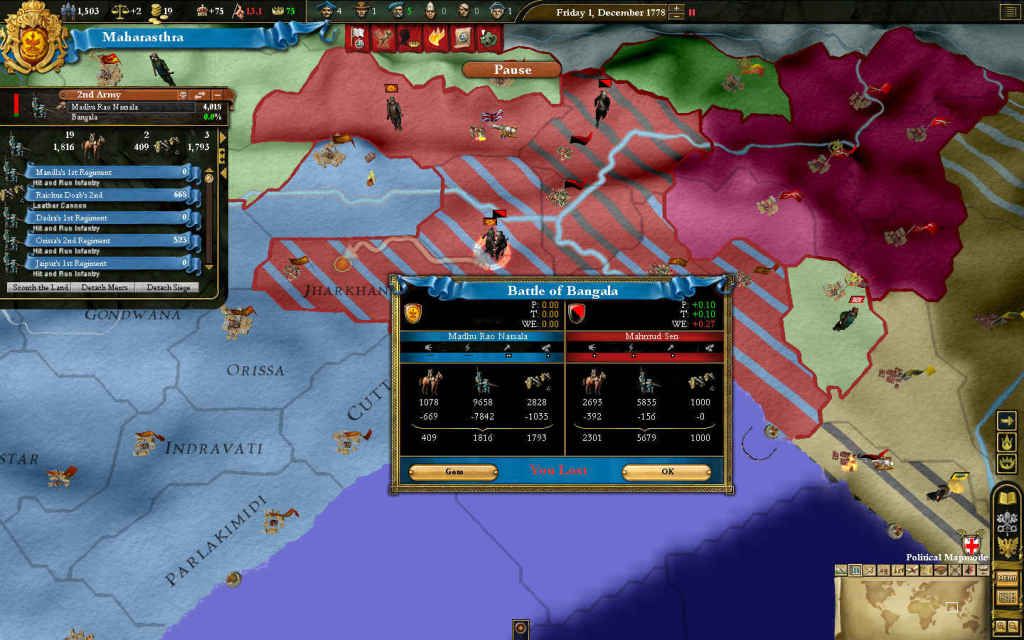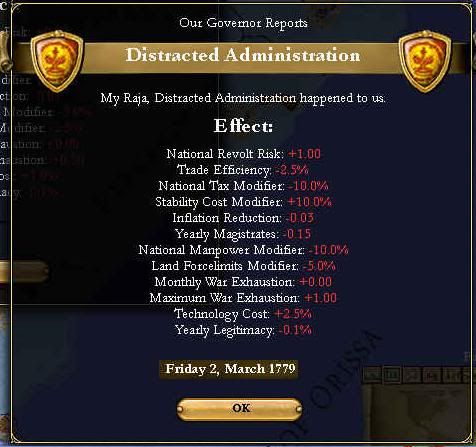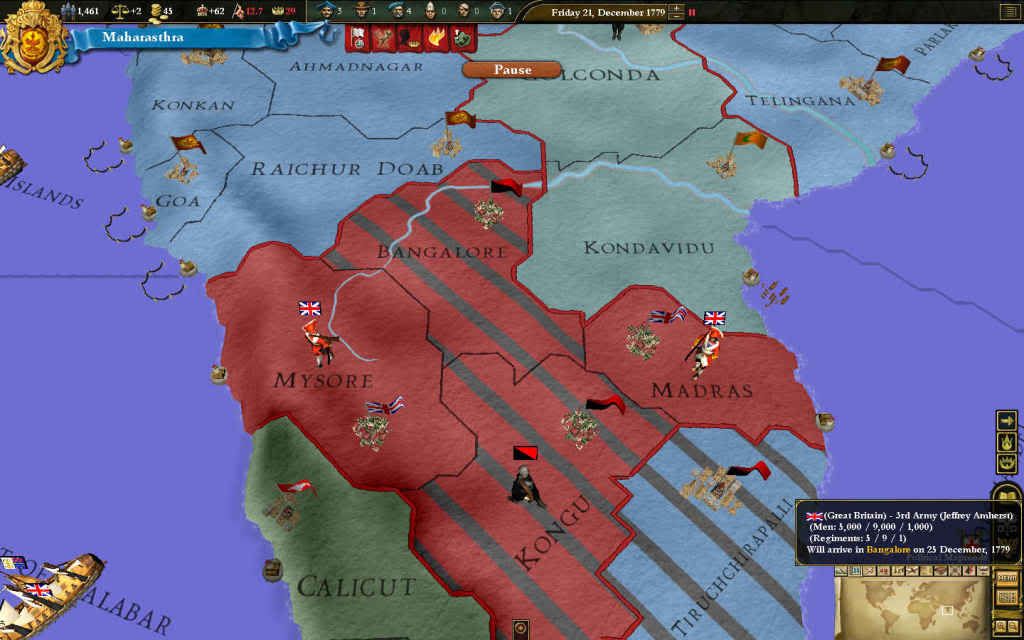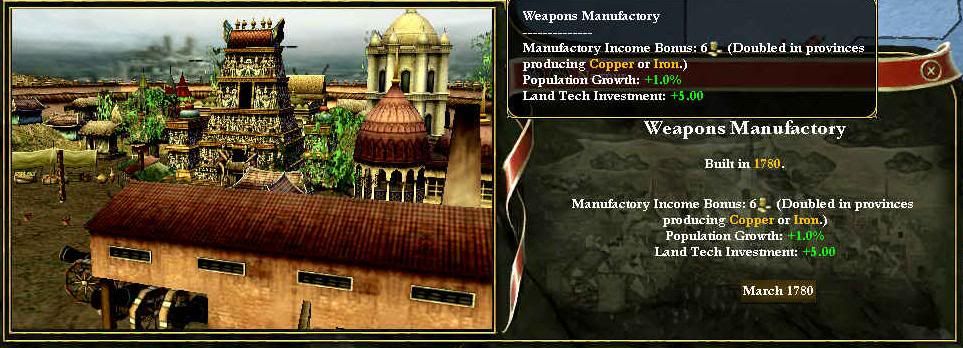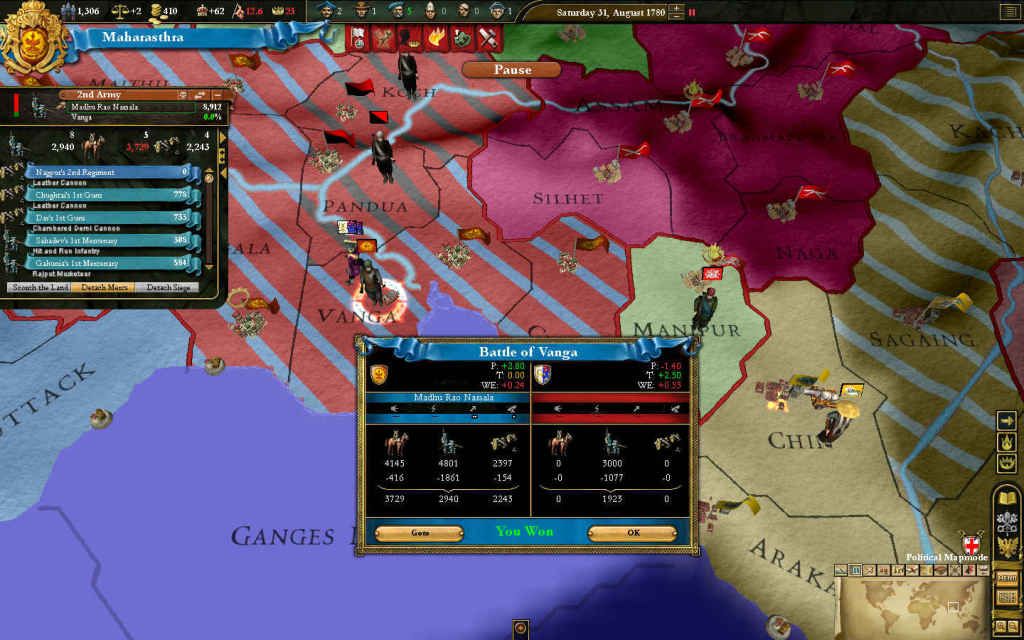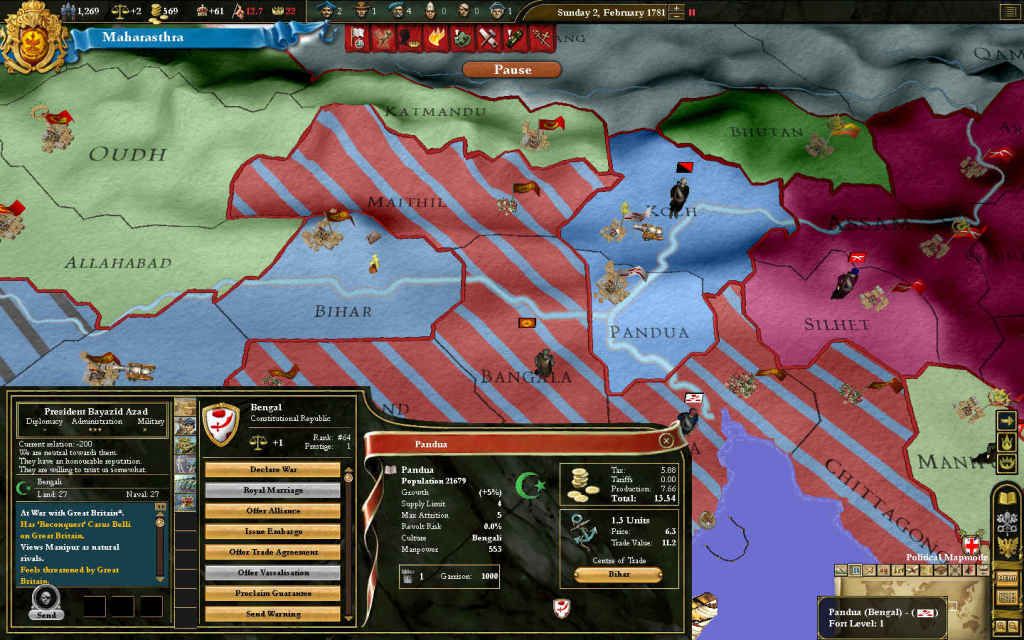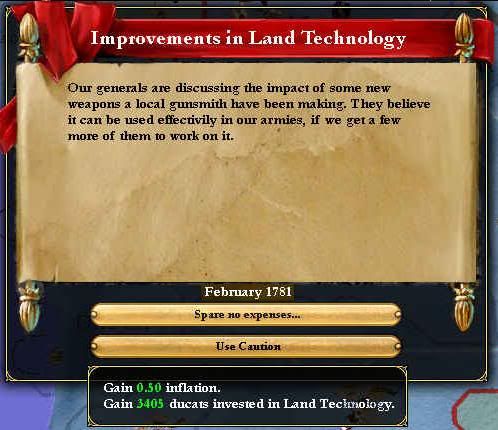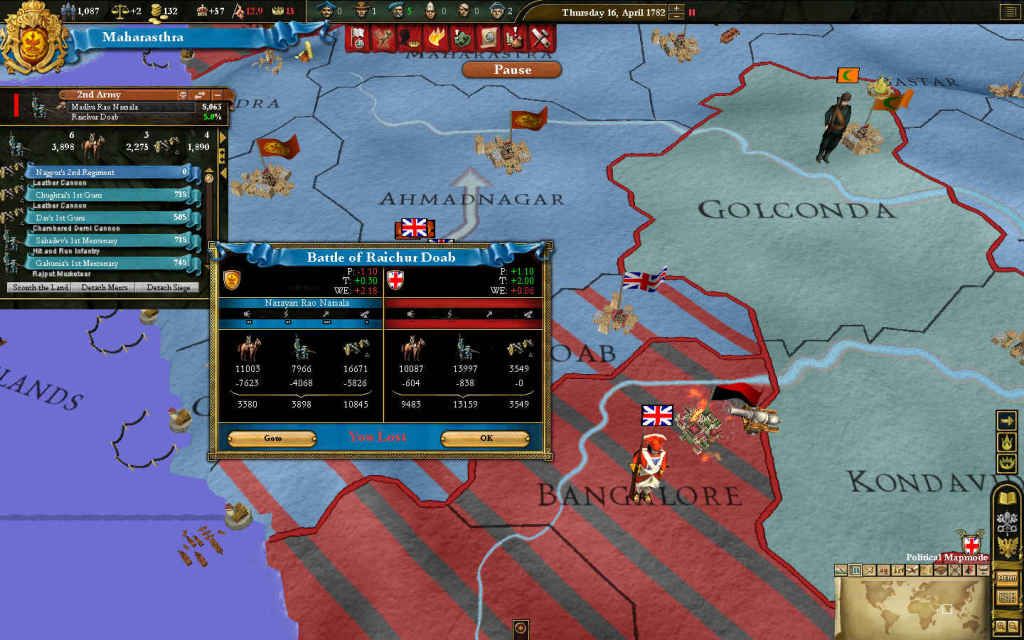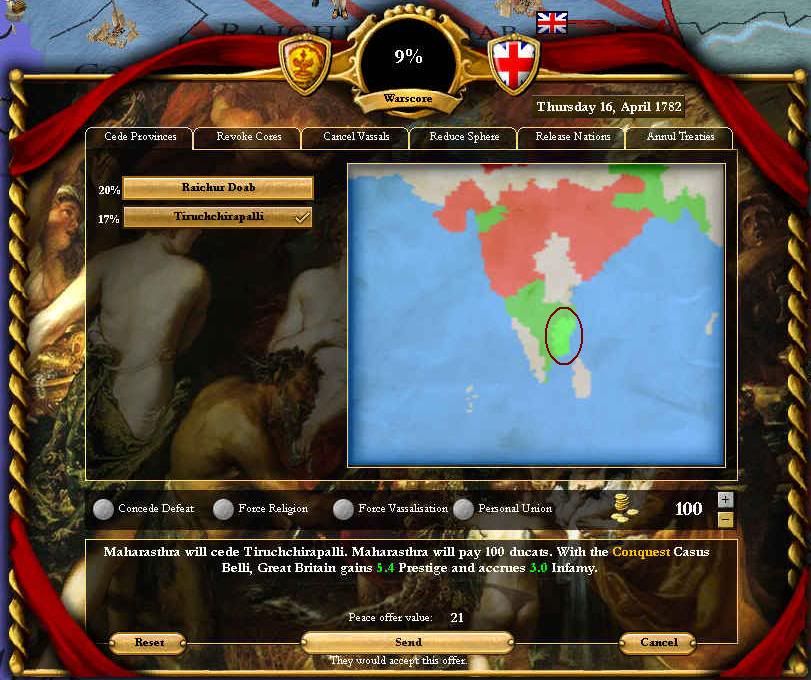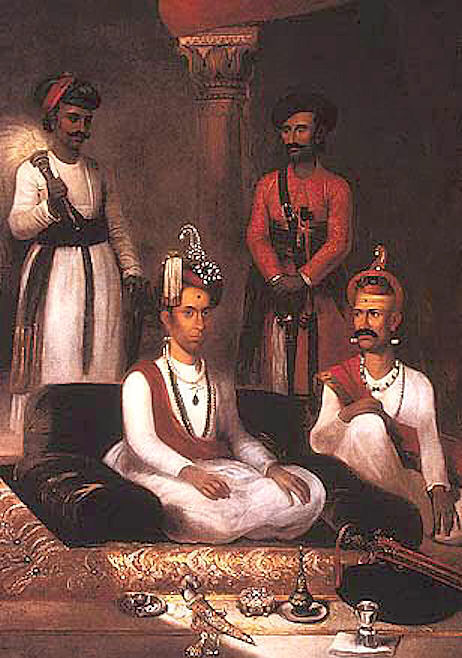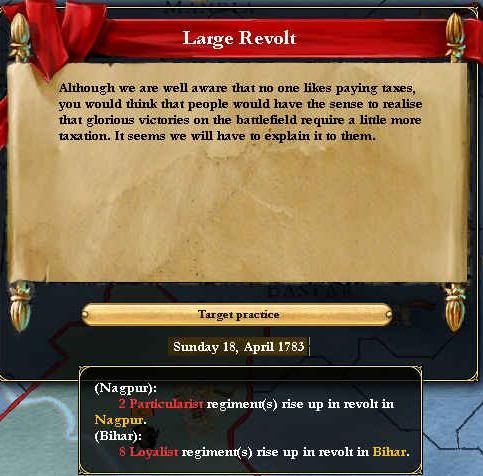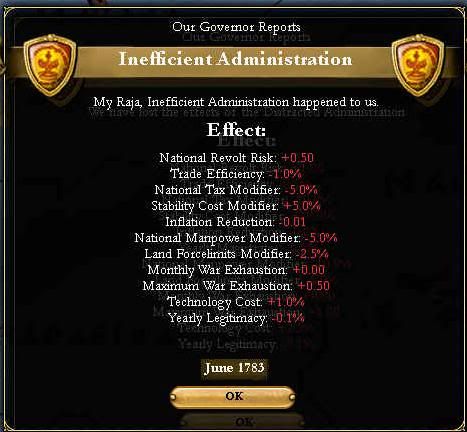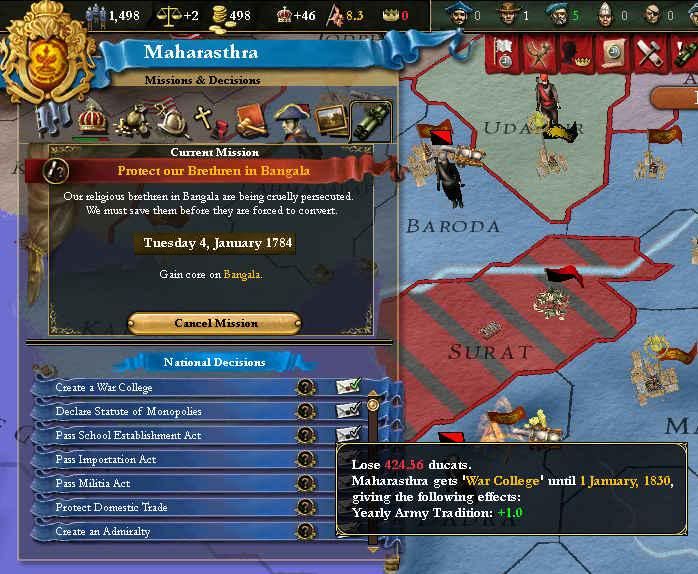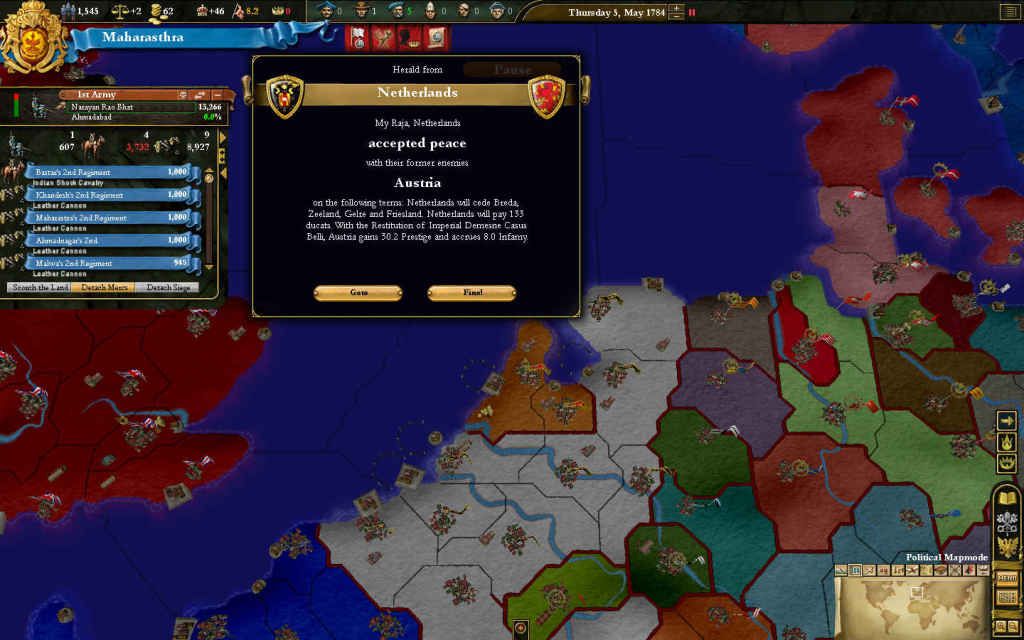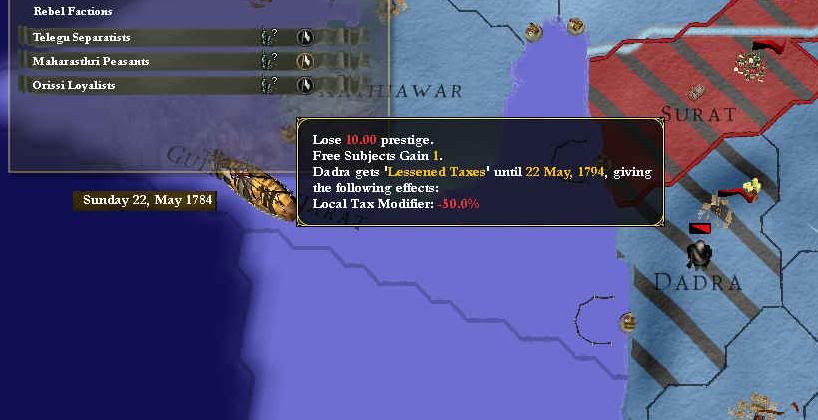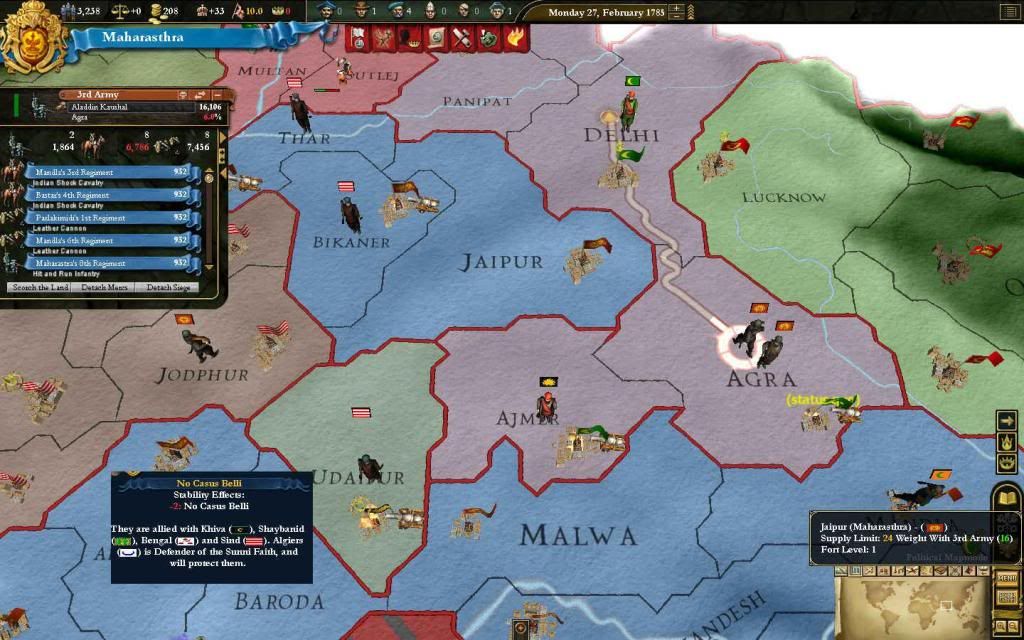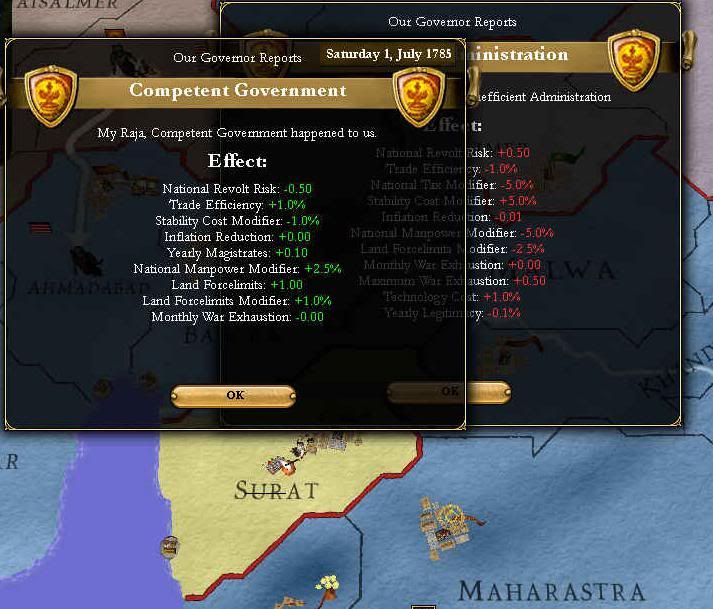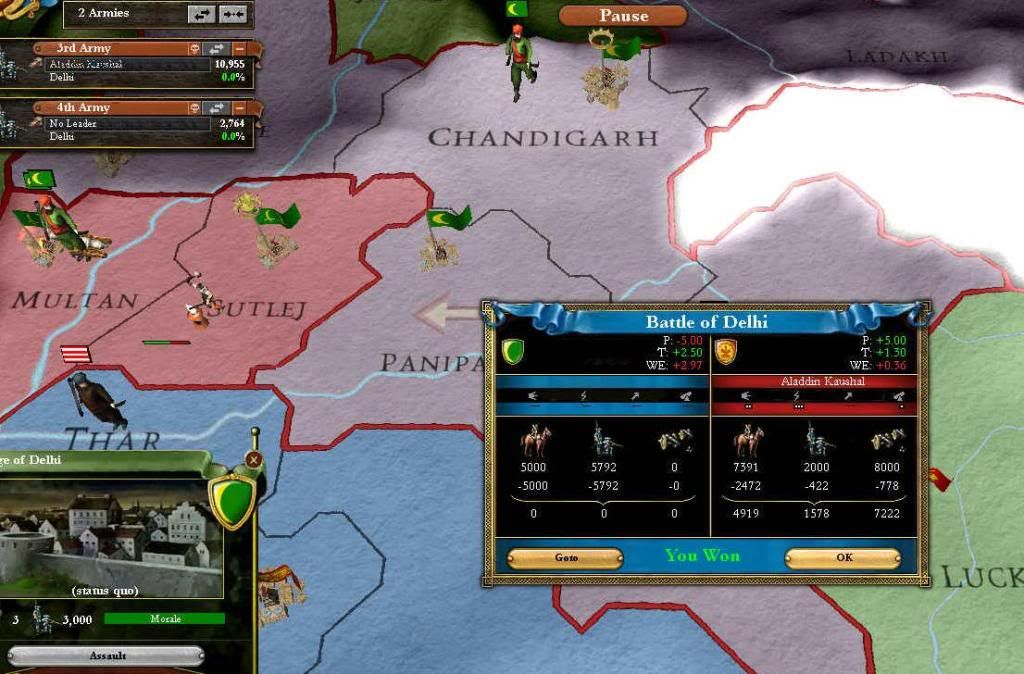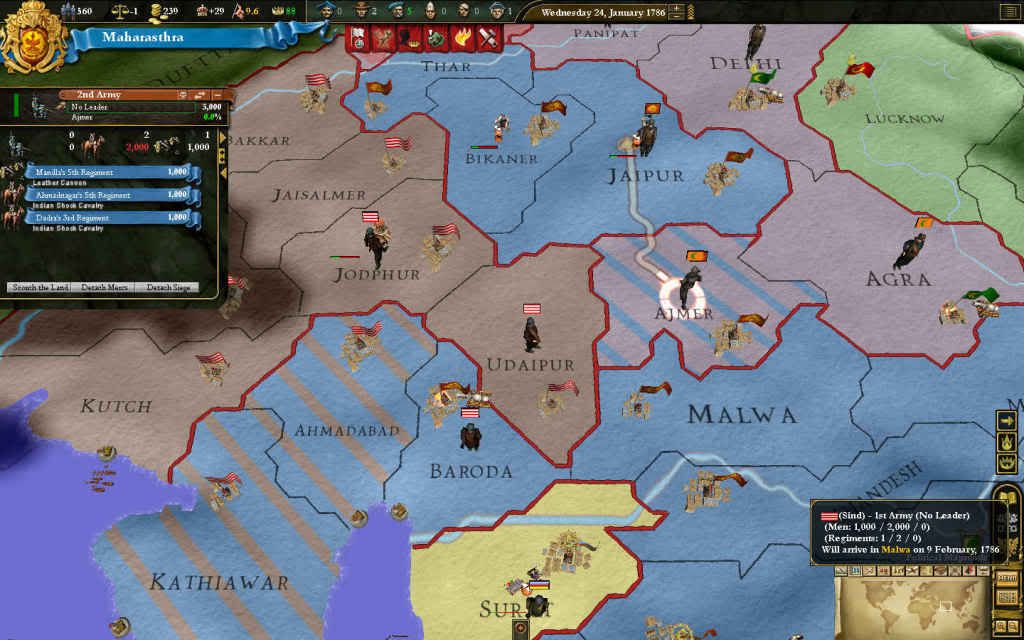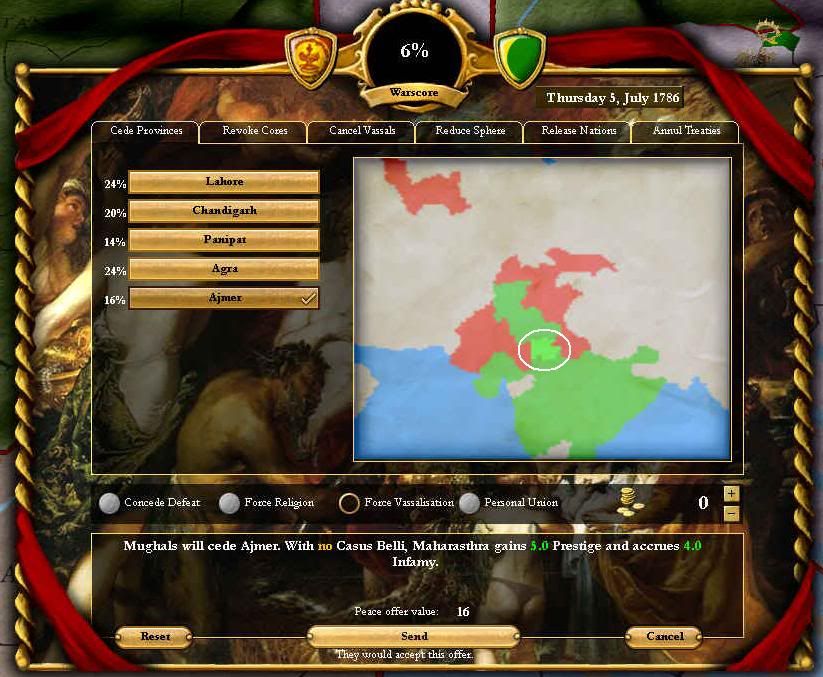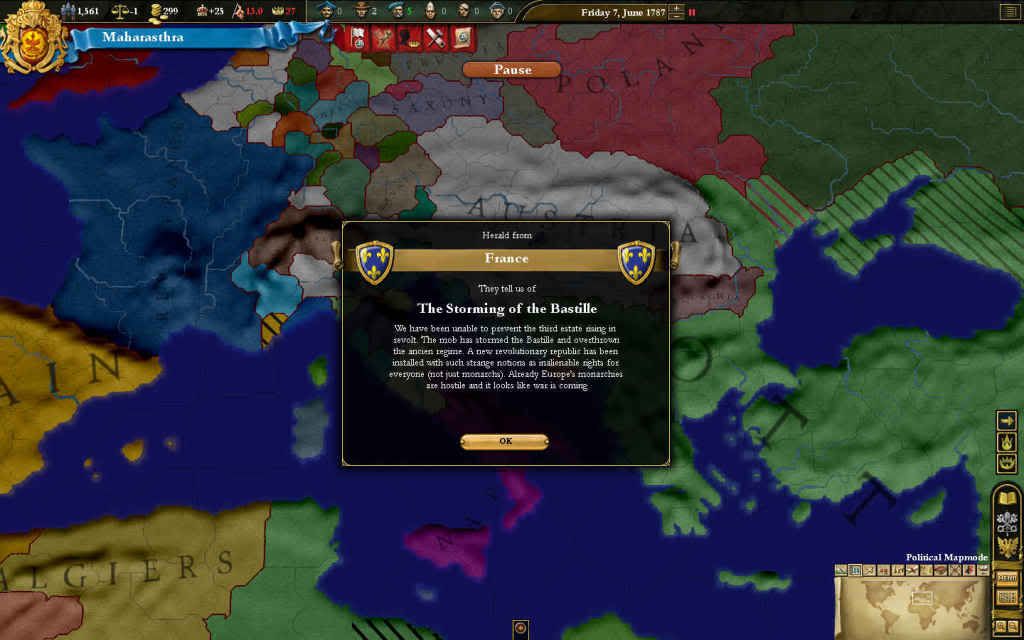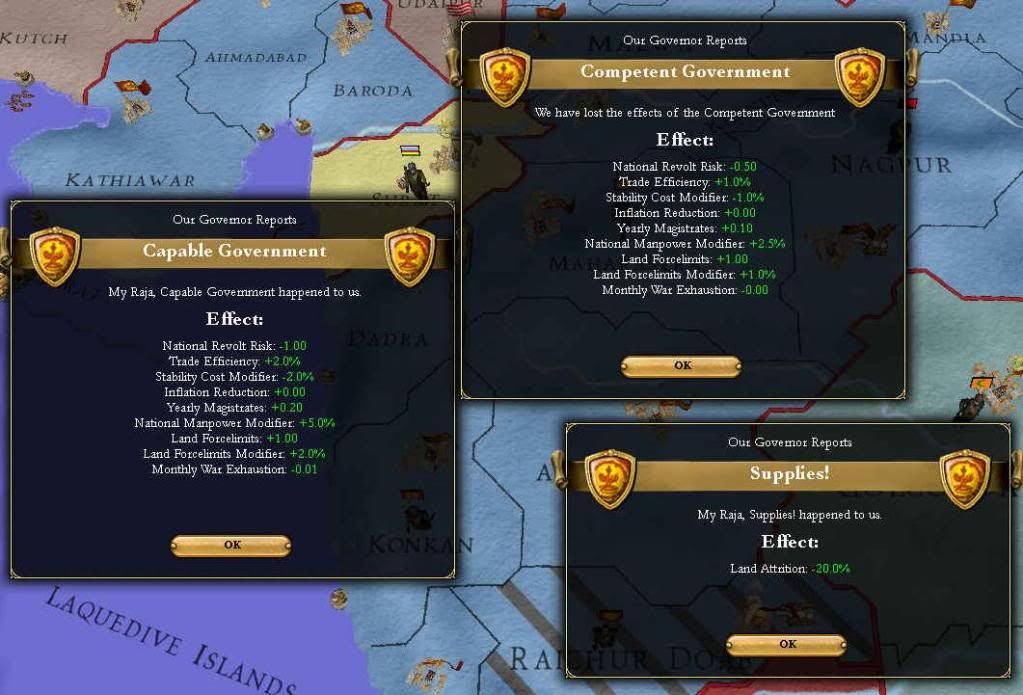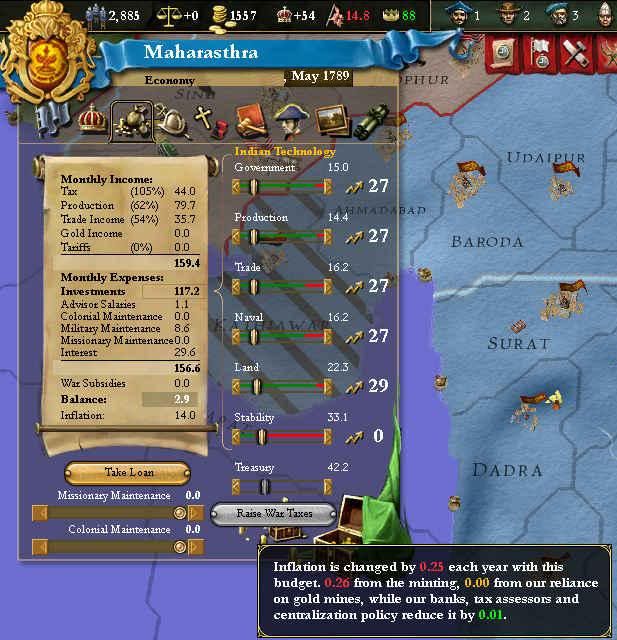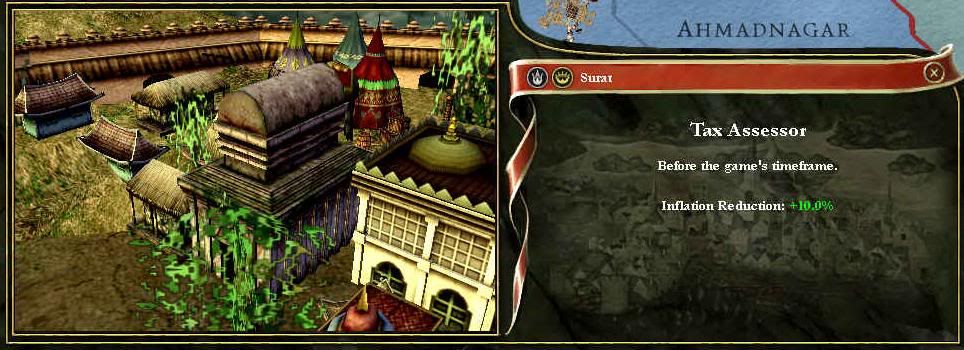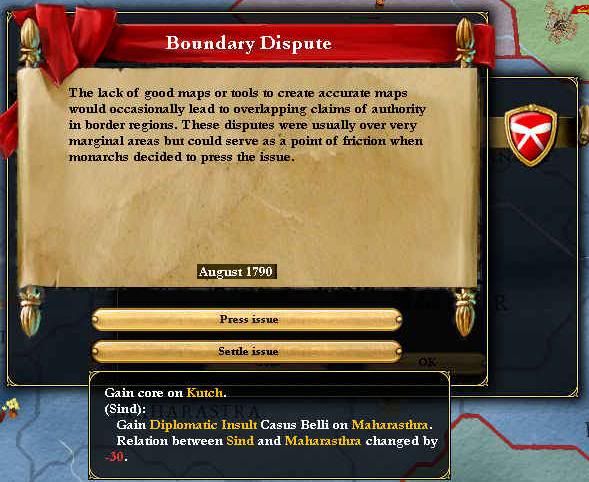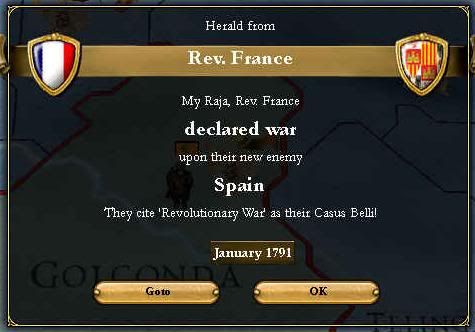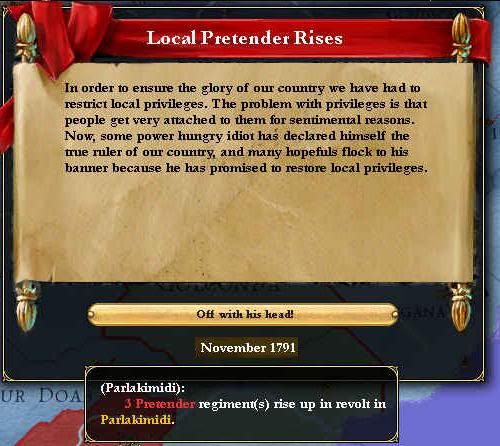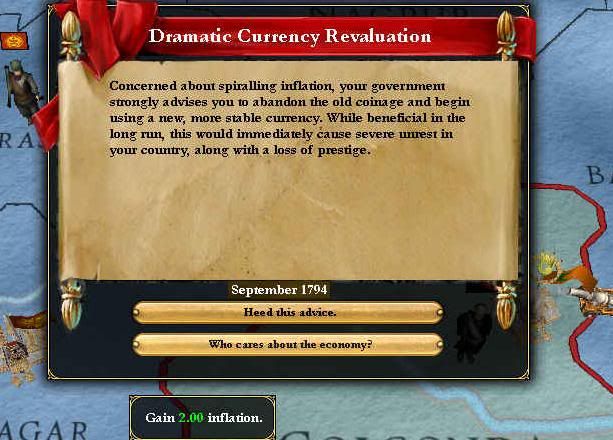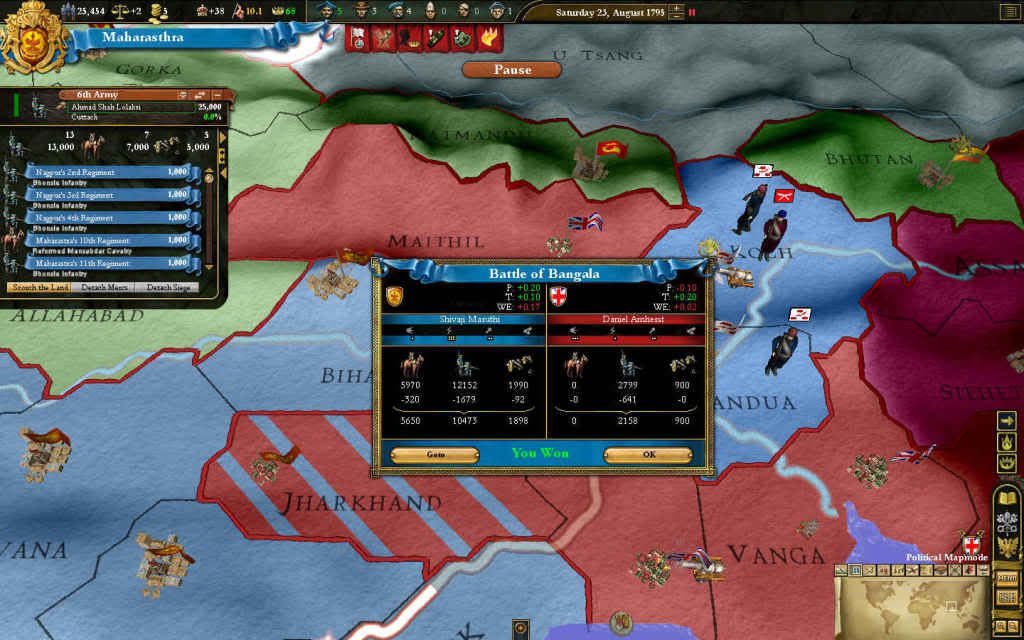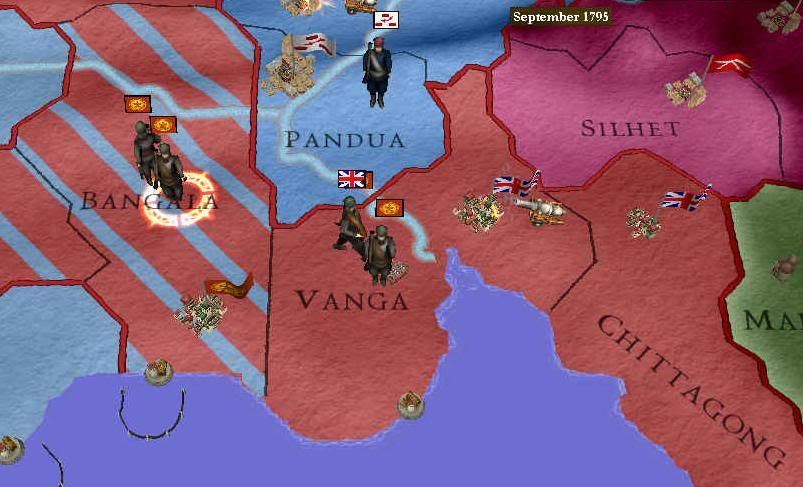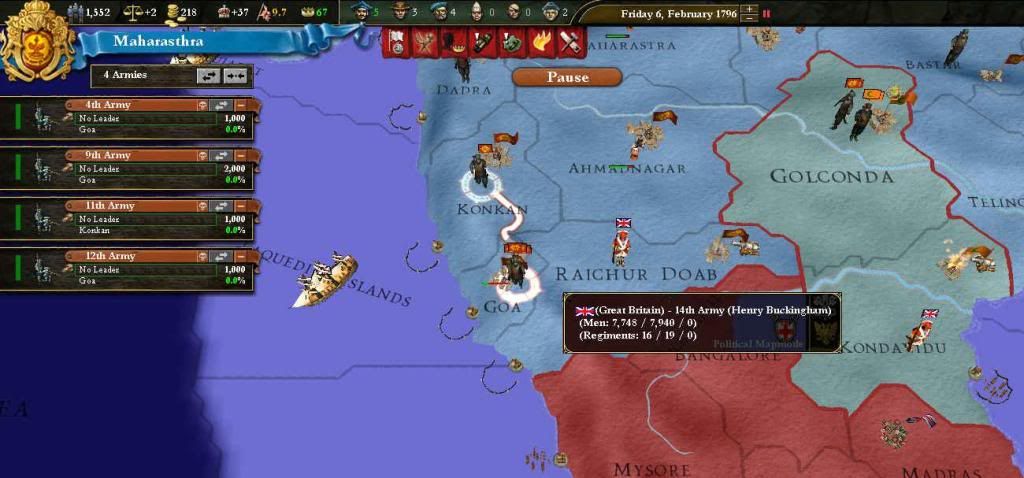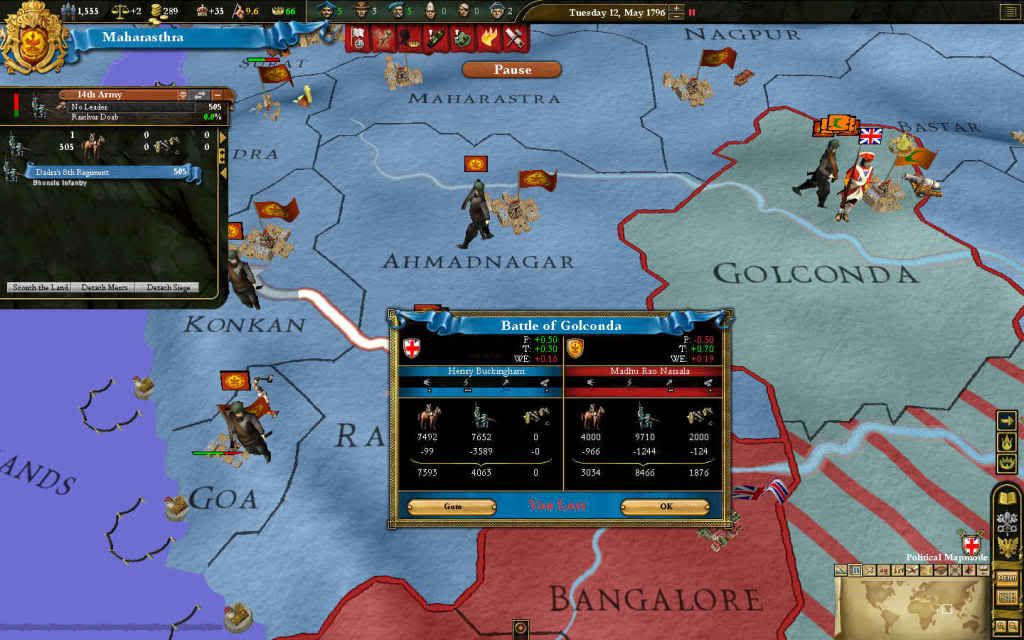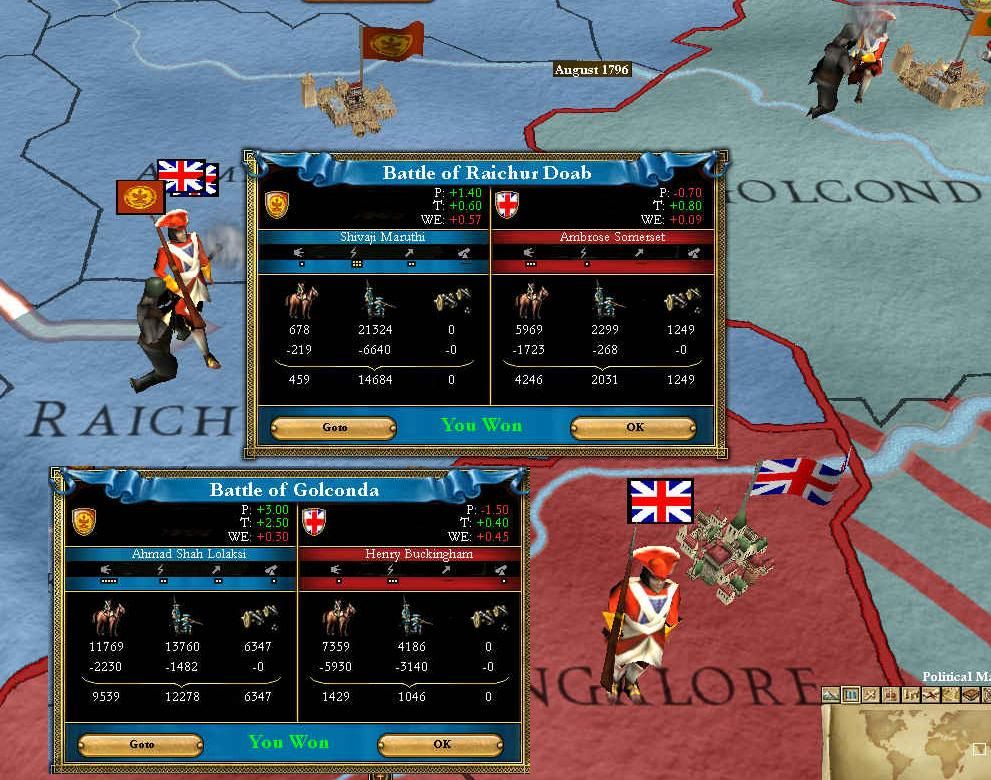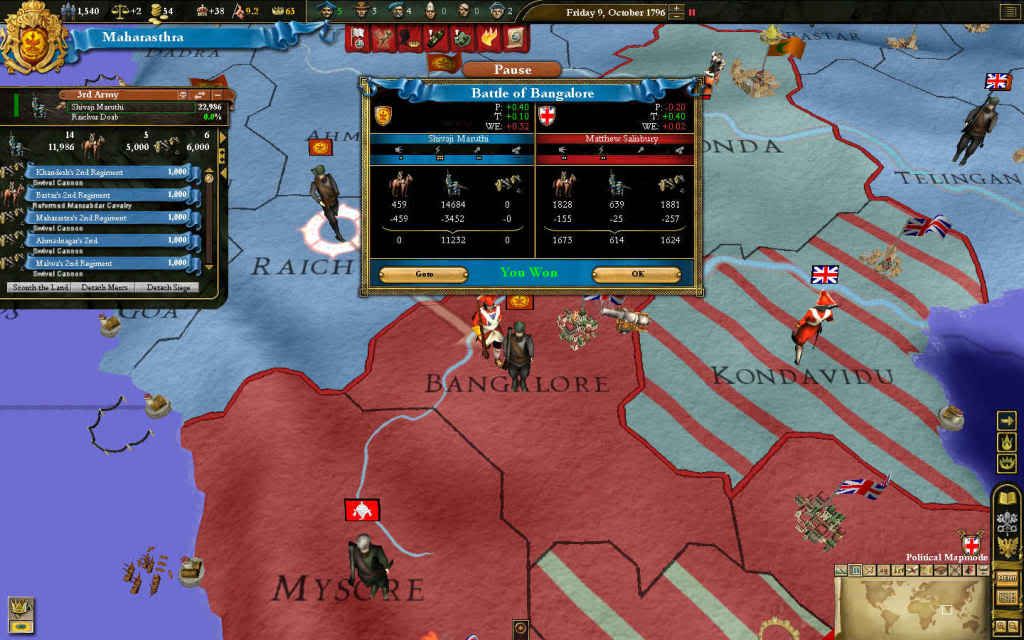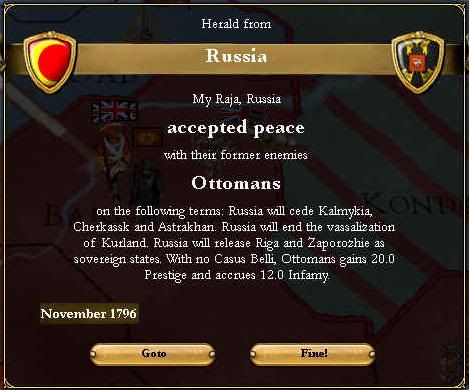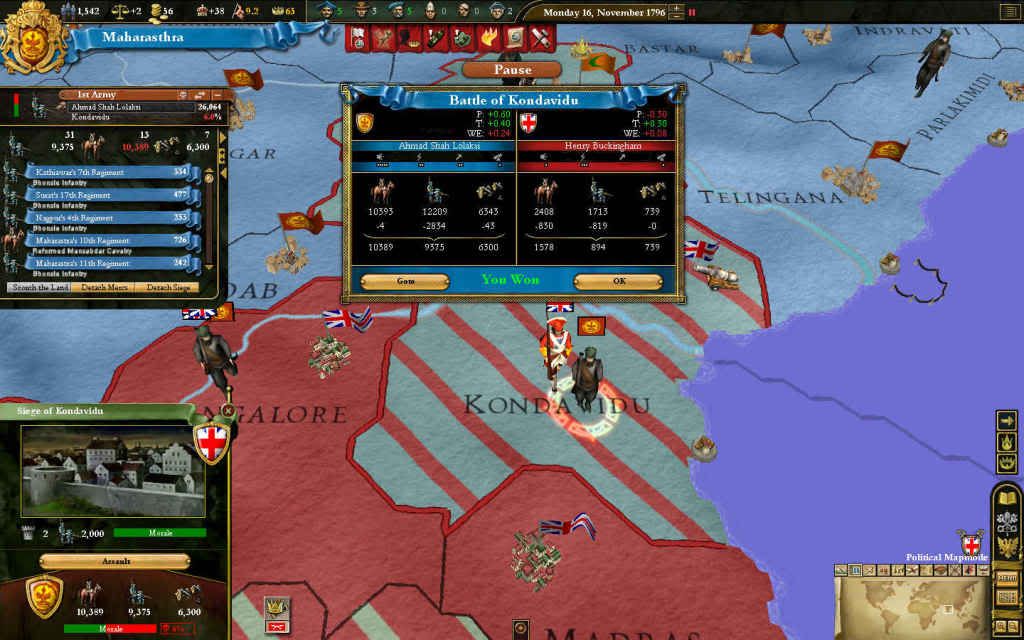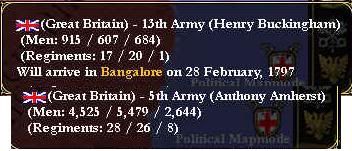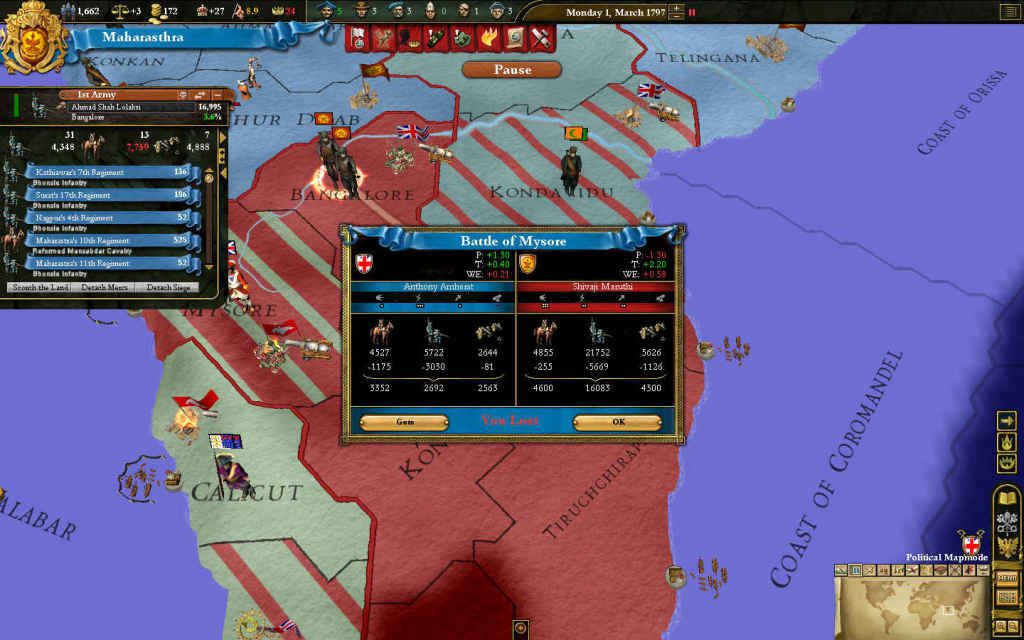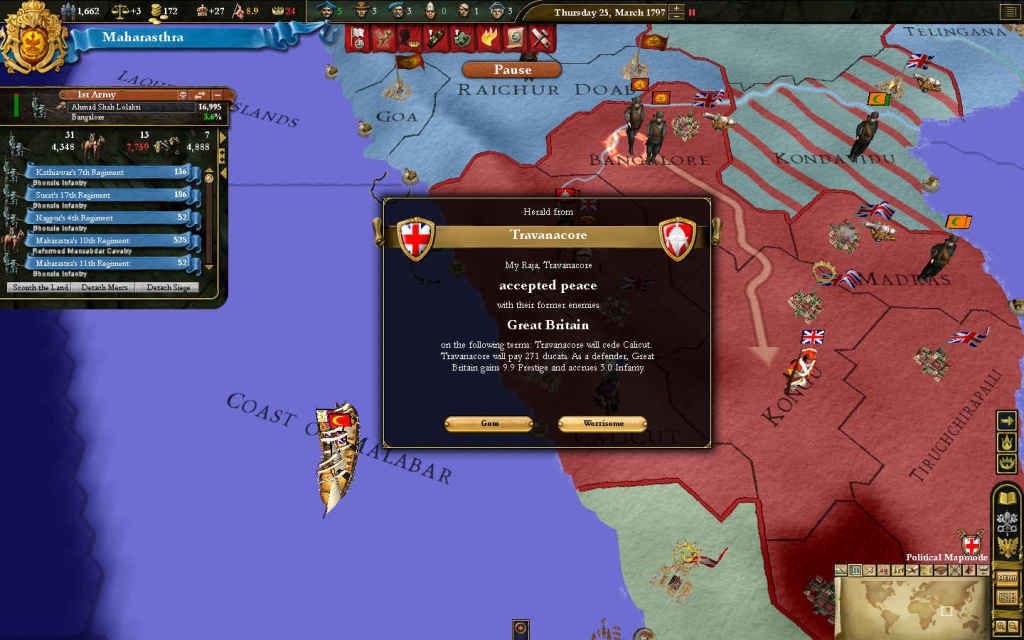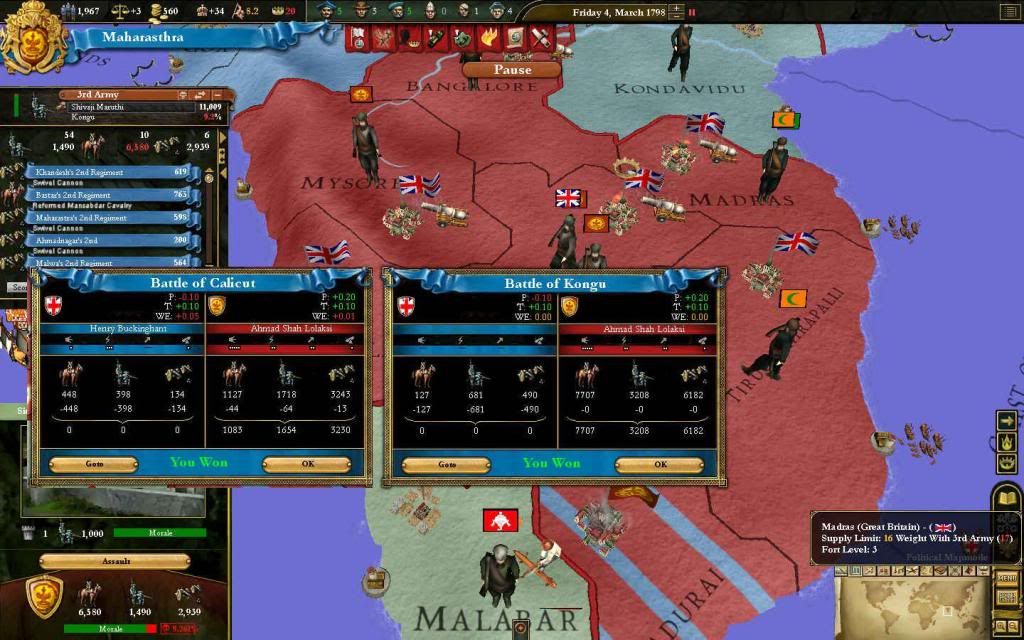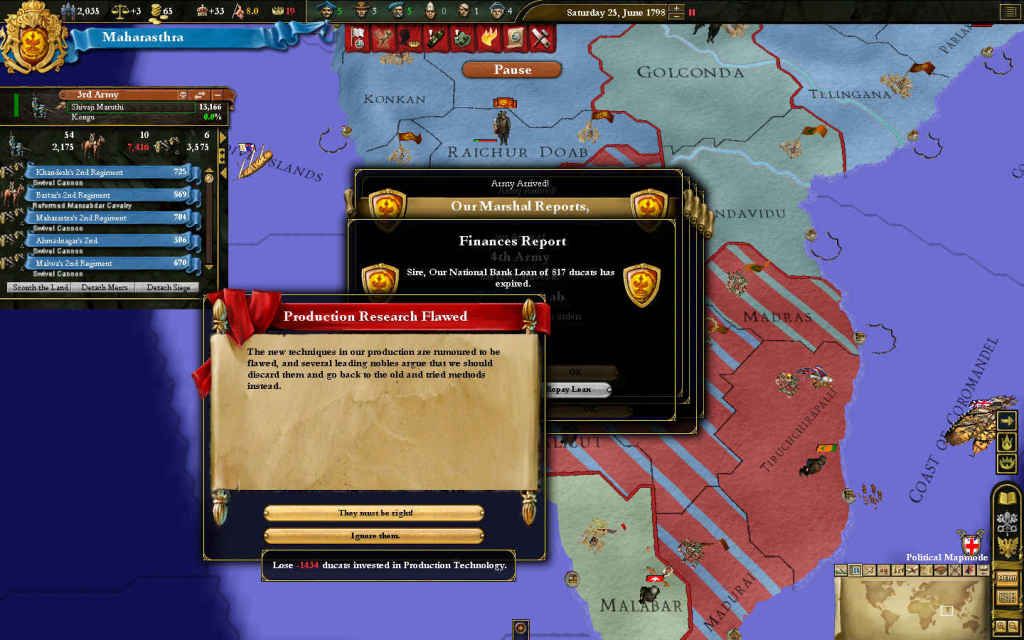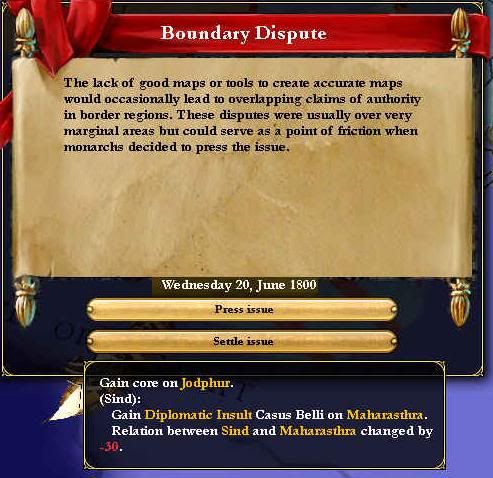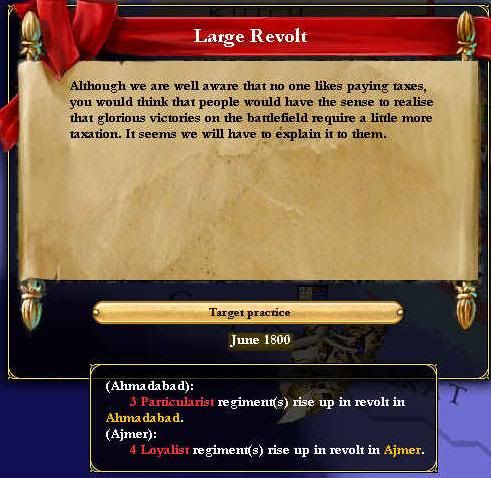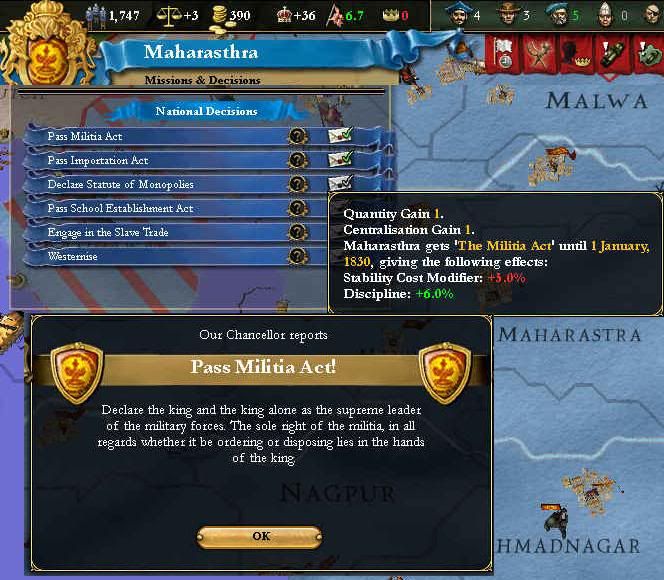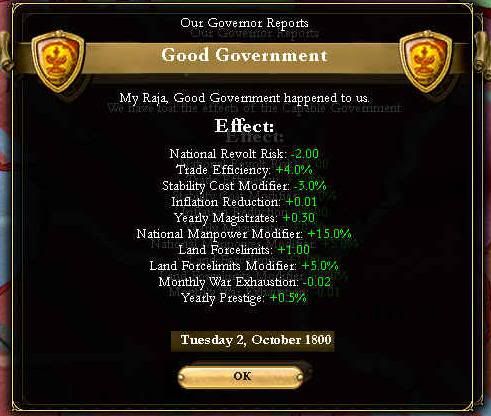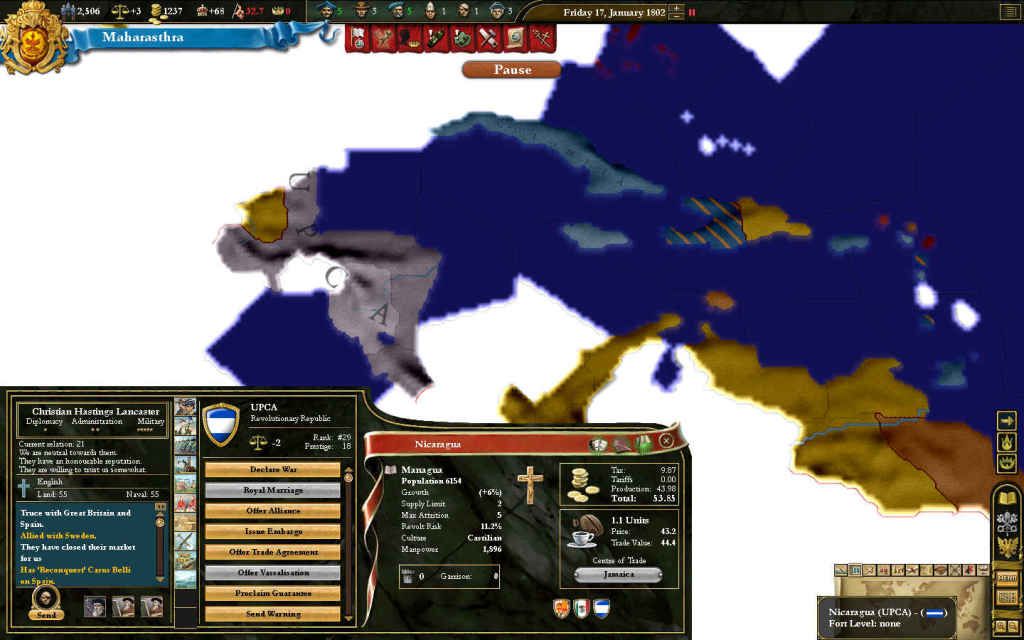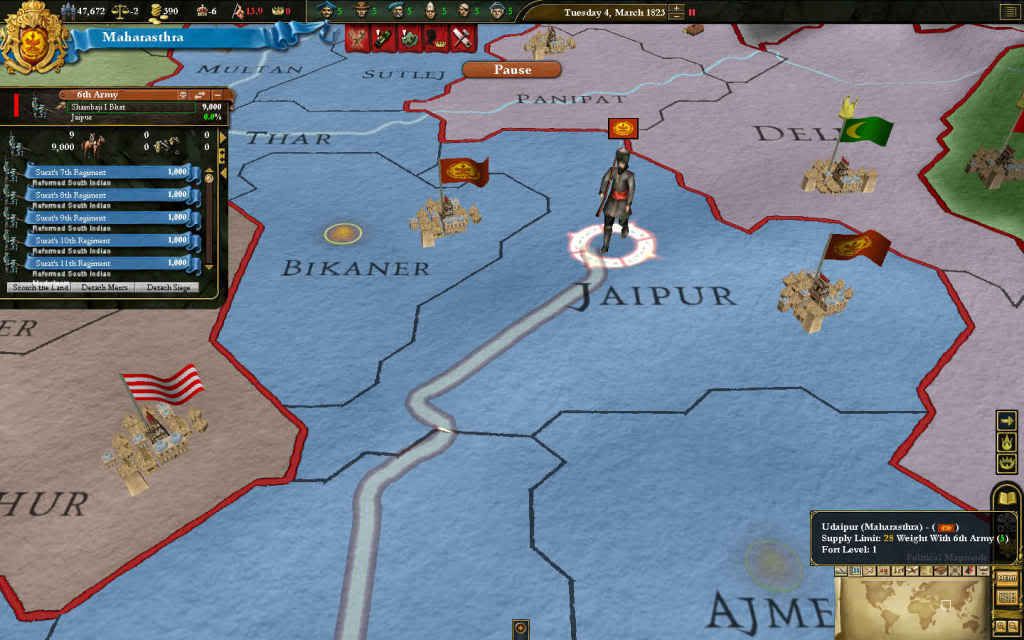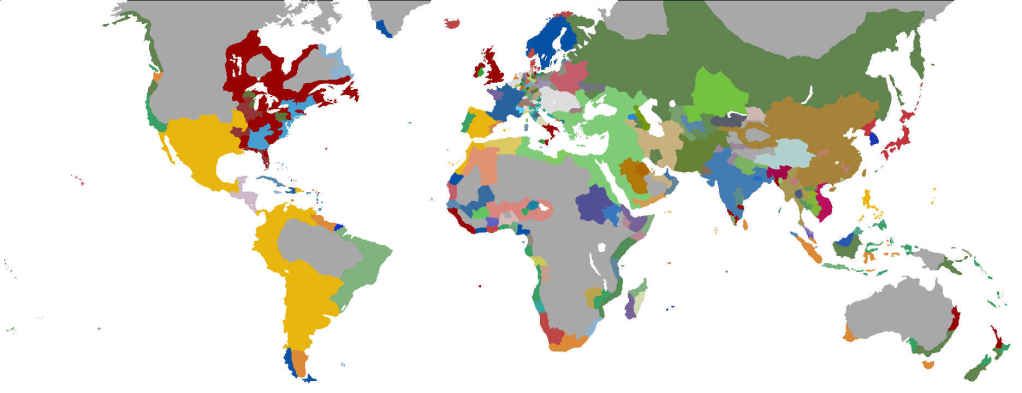Lone Wolf
Deity
- Joined
- Dec 4, 2006
- Messages
- 9,908
I don't have time for a long EU3 game and I feel that the late starts are often neglected among the EU3 community. After all, EU is supposed to be a game about the whole time period, not only about the late Middle Ages and the early Reformation.
HTTT, Sancta Romanum Imperium mod with my own changes. I don't have PixelShader 3.0, so porting my changes to Divine Wind only to have it running though 3DAnalyze makes it not worth the lag.
The game ends in 1830 as opposed to 1821, to give later starts slightly more breathing time.
Normal aggressiveness, VH difficulty, with added inflation reduction bonus for the AI.
I like playing Asian nations - all that exotic Orientalism and all that (Edward Said blahblahblah). And Maharasthtra presents an interesting mix of opportunities (other, weaker Indian states) and challenges (the British, who are already entrenched in Bengal by 1766). My goal is to conquer the former and kick the latter out of India.
Anyway, here's the start. Note the changed Westernization requirements.
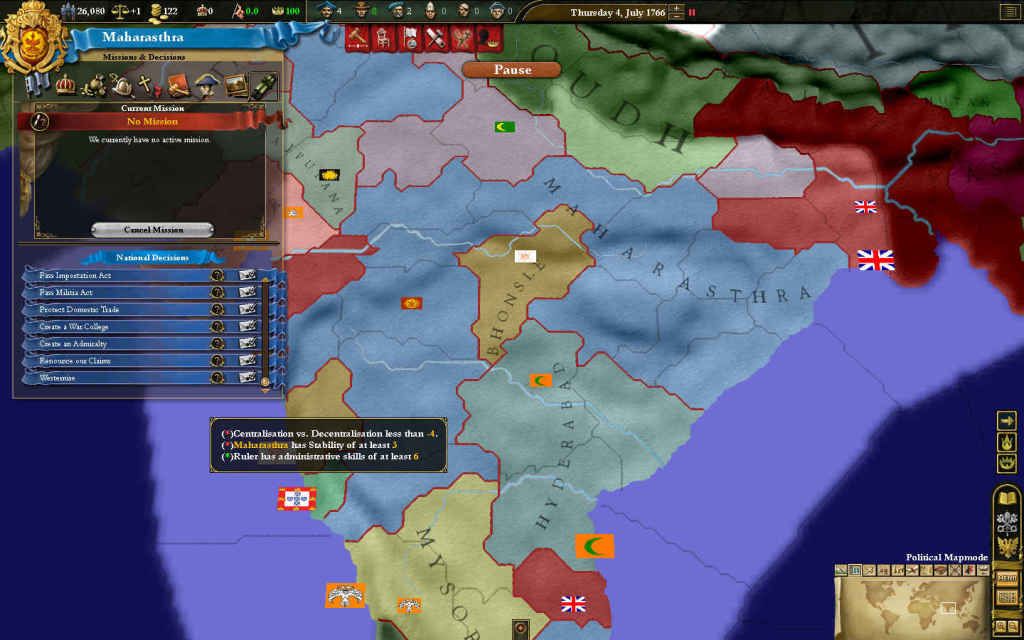
In 1761, the Maratha Confederacy had lost the famous Third Battle of Panipat to the Durrani shah of Afghanistan. Our Peshwa (whom the game calls Raja, because I am not going to change the localization file for one country), Madhu Rao, succeeded in restoring Maratha authority to parts of Northern India, yet he was forced to give the Maratha princes in Nagpur wide autonomy. Now he is ready to subdue them back to his authority.
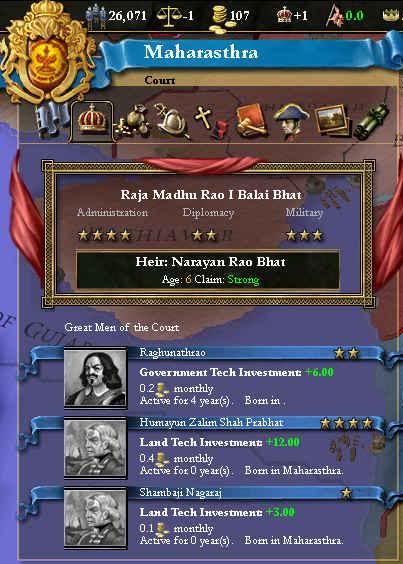

Madhu Rao Peshwa.
After consolidating North India, the Peshwa declared his authority to be absolute (switch to Absolute Monarchy government). He also announced measures aimed at reducing the local princely authority (+1 centralization). This provoked a pretender rebellion that was eaily crushed by troops loyal to Madhu Rao.
The budget. Indian tech rate is 60%.
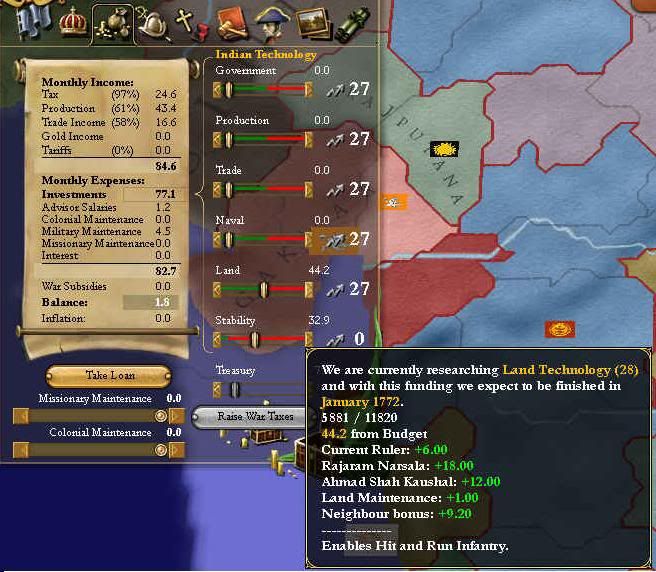
As usual, I am not afraid of inflation much. It doesn't have the time to reach 40% (when I start worrying about it).
In 1776, the Peshwa declared war at the Nagpur princes. That, for some reason or other, provoked a protest from the ruler of the Mughal remnant. Yeah, whatever.

More worrying was the Nizam of Hyderabad's insistence that the Peshwa cedes Nagpur to him. For a while, Madhu Rao agreed, focusing his attention on the Konkan princes (the Hyderabad forces start sieging Nagpur earlier then mine).
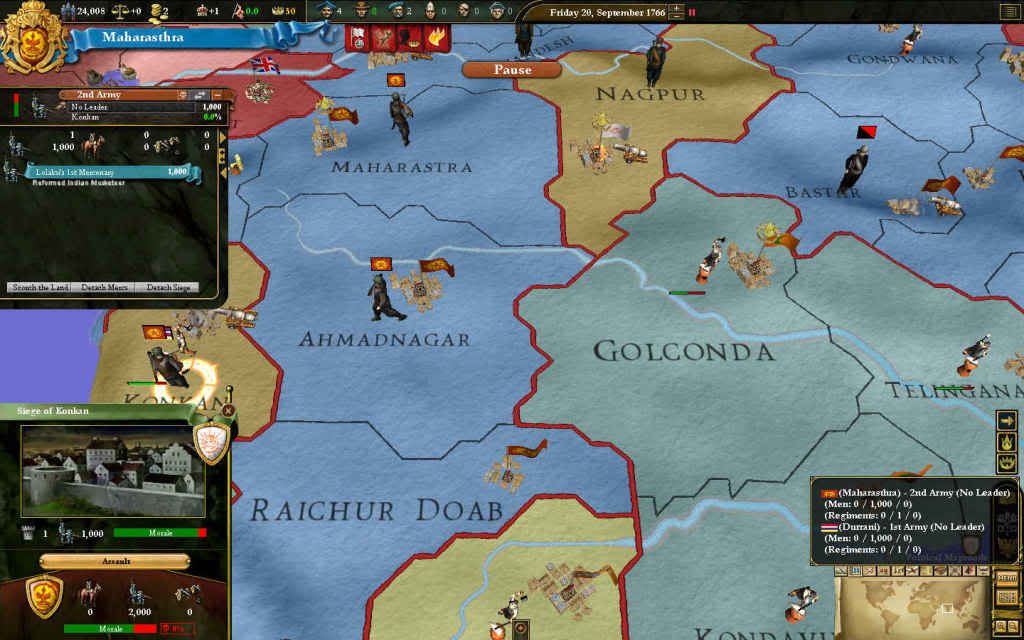
Apparently, all that drama caused the Peshwa to neglect the administration a bit:
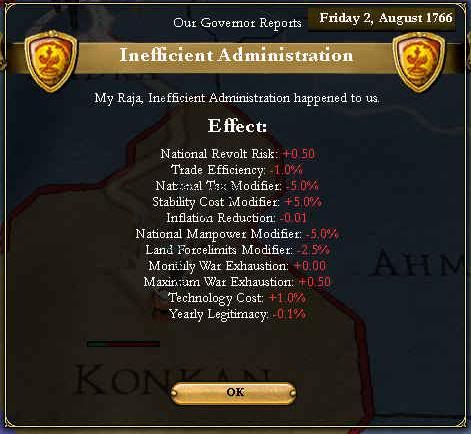
Among other developments, the local populace in Goa rose up against the Portuguese oppression. The Peshwa established contact with the rebels. While afraid to help them openly, he agreed to take over Goa, provided the rebels would be capable of defending it.
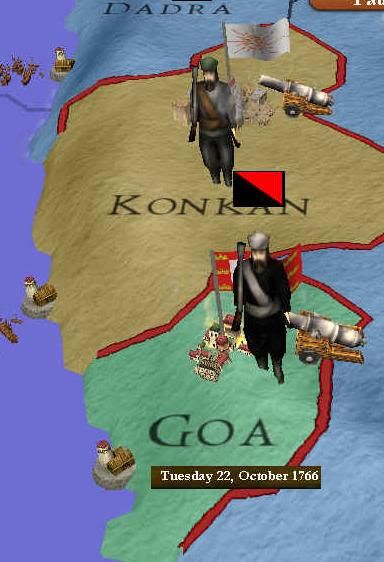
Soon after that, the administrative situation improved:
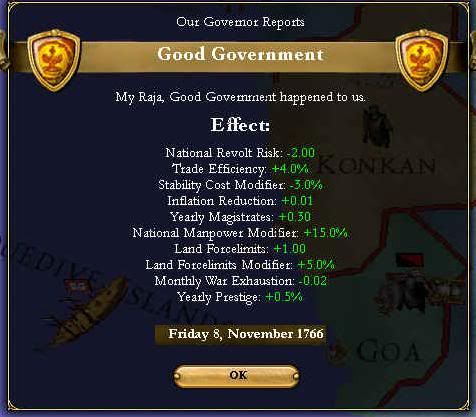
In early 1767, the Nizam took over Nagpur.
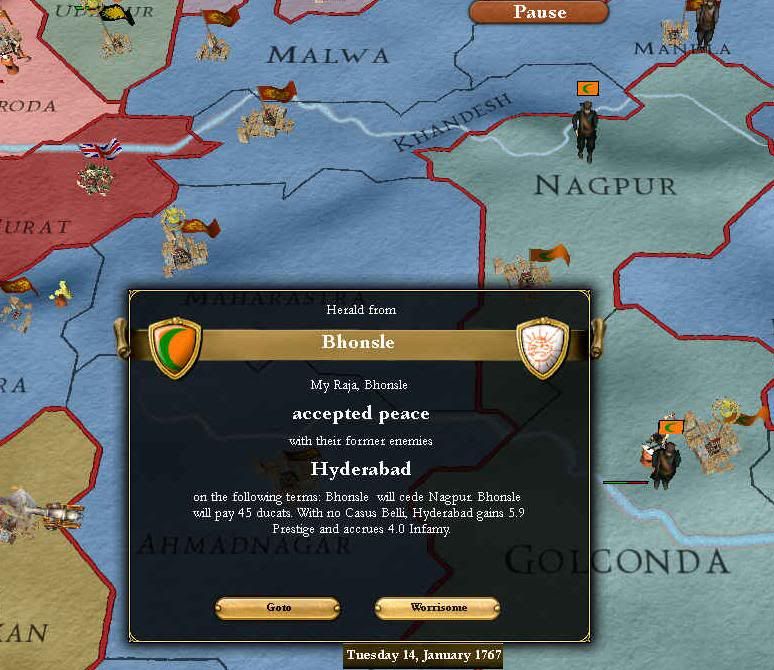
Meanwhile, Hyder Ali of Mysore overthrew the Wodeyar dynasty and started antagonizing the British:
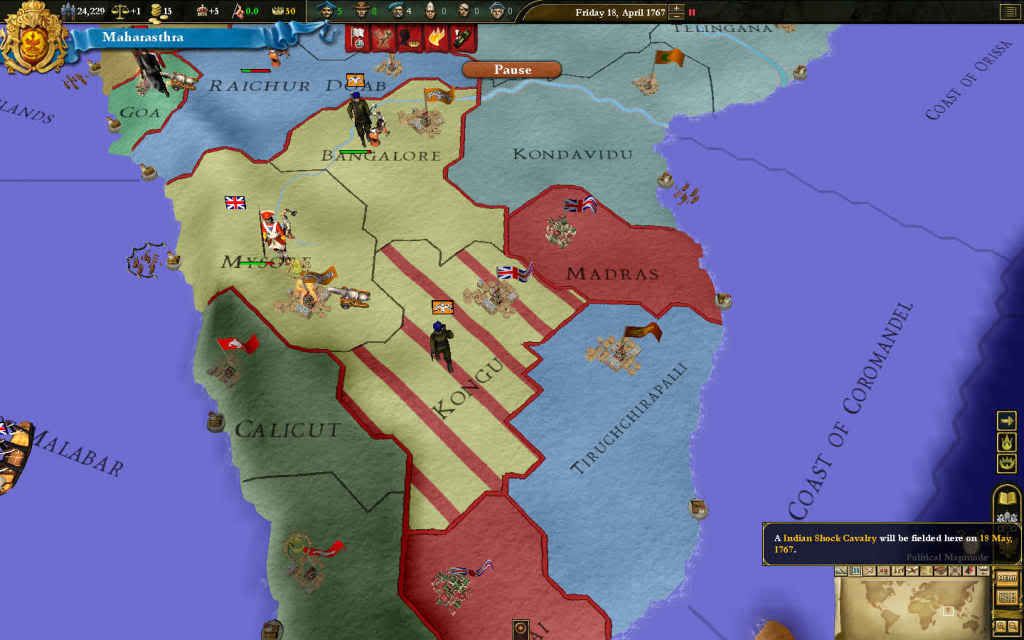
Some Hindu nobles, worried at Madhu Rao's centralization, attempted to attack his measures from a traditional religious viewpoint. But the Peshwa refused to back down.
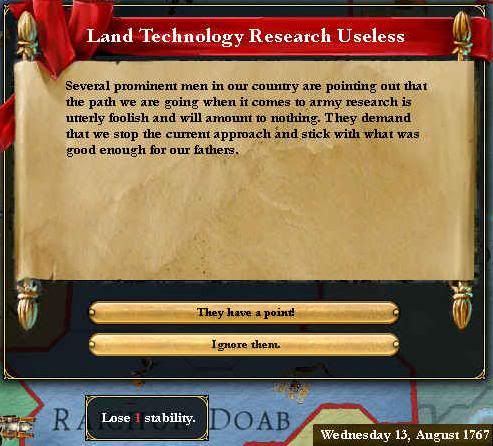
In 1767, the resistance of the Kankan princes was completely crushed.
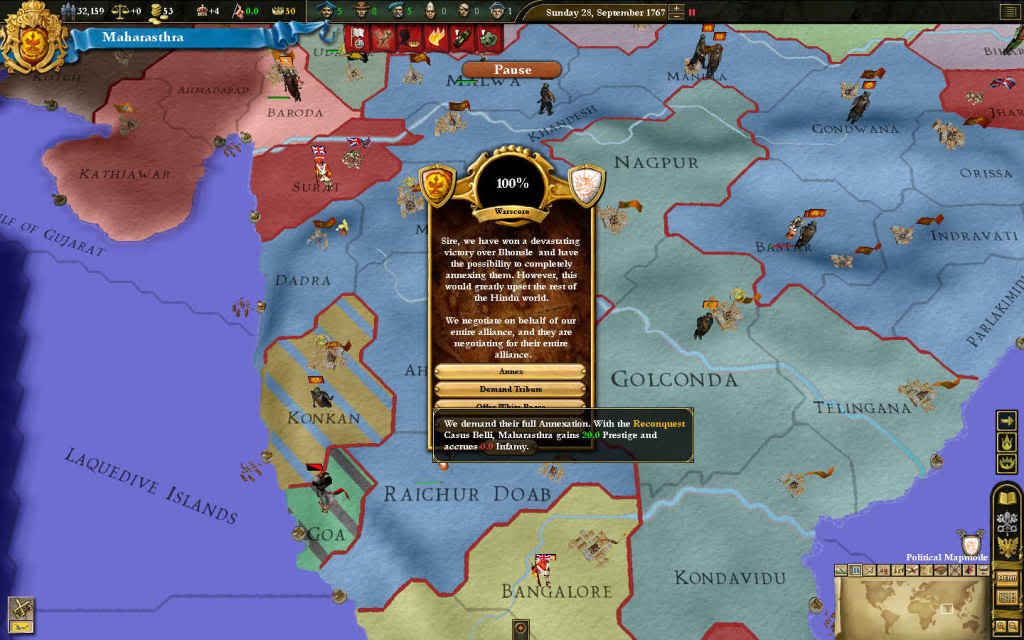
HTTT, Sancta Romanum Imperium mod with my own changes. I don't have PixelShader 3.0, so porting my changes to Divine Wind only to have it running though 3DAnalyze makes it not worth the lag.
The game ends in 1830 as opposed to 1821, to give later starts slightly more breathing time.
Normal aggressiveness, VH difficulty, with added inflation reduction bonus for the AI.
I like playing Asian nations - all that exotic Orientalism and all that (Edward Said blahblahblah). And Maharasthtra presents an interesting mix of opportunities (other, weaker Indian states) and challenges (the British, who are already entrenched in Bengal by 1766). My goal is to conquer the former and kick the latter out of India.
Anyway, here's the start. Note the changed Westernization requirements.

In 1761, the Maratha Confederacy had lost the famous Third Battle of Panipat to the Durrani shah of Afghanistan. Our Peshwa (whom the game calls Raja, because I am not going to change the localization file for one country), Madhu Rao, succeeded in restoring Maratha authority to parts of Northern India, yet he was forced to give the Maratha princes in Nagpur wide autonomy. Now he is ready to subdue them back to his authority.


Madhu Rao Peshwa.
After consolidating North India, the Peshwa declared his authority to be absolute (switch to Absolute Monarchy government). He also announced measures aimed at reducing the local princely authority (+1 centralization). This provoked a pretender rebellion that was eaily crushed by troops loyal to Madhu Rao.
The budget. Indian tech rate is 60%.

As usual, I am not afraid of inflation much. It doesn't have the time to reach 40% (when I start worrying about it).
In 1776, the Peshwa declared war at the Nagpur princes. That, for some reason or other, provoked a protest from the ruler of the Mughal remnant. Yeah, whatever.

More worrying was the Nizam of Hyderabad's insistence that the Peshwa cedes Nagpur to him. For a while, Madhu Rao agreed, focusing his attention on the Konkan princes (the Hyderabad forces start sieging Nagpur earlier then mine).

Apparently, all that drama caused the Peshwa to neglect the administration a bit:

Among other developments, the local populace in Goa rose up against the Portuguese oppression. The Peshwa established contact with the rebels. While afraid to help them openly, he agreed to take over Goa, provided the rebels would be capable of defending it.

Soon after that, the administrative situation improved:

In early 1767, the Nizam took over Nagpur.

Meanwhile, Hyder Ali of Mysore overthrew the Wodeyar dynasty and started antagonizing the British:

Some Hindu nobles, worried at Madhu Rao's centralization, attempted to attack his measures from a traditional religious viewpoint. But the Peshwa refused to back down.

In 1767, the resistance of the Kankan princes was completely crushed.

Last edited:

